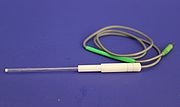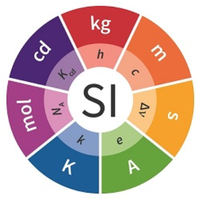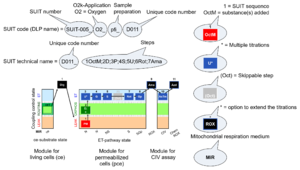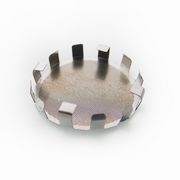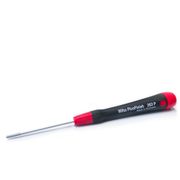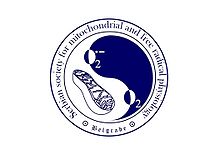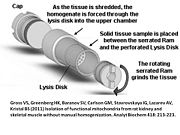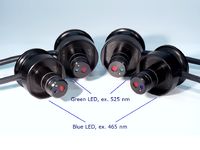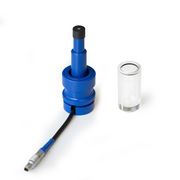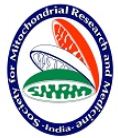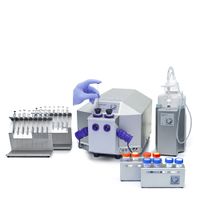Semantic search
| Term | Abbreviation | Description | |||||||||||||||||||||||||||||||||||||||||||||||||||||||
|---|---|---|---|---|---|---|---|---|---|---|---|---|---|---|---|---|---|---|---|---|---|---|---|---|---|---|---|---|---|---|---|---|---|---|---|---|---|---|---|---|---|---|---|---|---|---|---|---|---|---|---|---|---|---|---|---|---|
| Reference state | Z | The reference state Z (reference rate ZX) is the respiratory state with high flux in relation to the background state Y with low background flux YX. The transition between the background state and the reference state is a step brought about by a metabolic control variable X. If X stimulates flux (ADP, fuel substrate), it is present in the reference state but absent in the background state. If X is an inhibitor of flux, it is absent in the reference state but present in the background state. The reference state is specific for a single step to define the flux control efficiency. In contrast, in a sequence of multiple steps, the common reference state is frequently taken as the state with the highest flux in the entire sequence, as used in the definition of the flux control ratio. | |||||||||||||||||||||||||||||||||||||||||||||||||||||||
| Reference-Electrode\2.4 mm | Reference-Electrode\2.4 mm: 2.4 mm diameter glass shaft, for ISE. | ||||||||||||||||||||||||||||||||||||||||||||||||||||||||
| References in BEC https-format | BEC https-format | References in BEC https-format show (1) the list of authors, (2) the year of publication in parentheses, (3) the title of the publication, and (4) the https://doi.org/ link. Removing all the unnecessary detail of journal name and pages, the focus is on authors, year, and title of the reference, which is a concept in line with DORA. The https-link then does the full job. In exceptional cases when there is no such link, the following formats would apply: a https://pubmed.ncbi.nlm.nih.gov/ link, a link directly to an Open Access pdf, or the old conventional format for the reference. Scientific journals apply yesterday's concepts in the various formats of references with bewildering abbreviations of journals, volumes, issues, page numbers. We can do today's job much better using the BEC https-format:
Compare with a conventional reference format in: Gnaiger E (2021) Beyond counting papers – a mission and vision for scientific publication. https://doi.org/10.26124/bec:2021-0005 | |||||||||||||||||||||||||||||||||||||||||||||||||||||||
| Reflectance spectrophotometry | In reflectance spectrophotometry the light from the sample is reflected back to the detector using mirrors. Before absorbance measurements can be made, a white balance is carried out. | ||||||||||||||||||||||||||||||||||||||||||||||||||||||||
| Reliability | Reliability relates the magnitude of the measurement error in observed measurements (i.e., precision or intermediate precision) to the inherent variability in the ‘error-free’, ‘true’, or underlying level of the quantity between subjects. The value of the reliability takes a value between 0 and 1. When the variability value is zero, indicates that all the variability in the measurements is due to measurement error. And, on the contrary, when the value is 1 indicates that there is a zero error in the measurement error. It is also known as the intraclass correlation, as it equals the correlation between any two measurements made on the same subject. | ||||||||||||||||||||||||||||||||||||||||||||||||||||||||
| Remittance spectrophotometry | In remittance spectrophotometry incident light enters a scattering medium and is scattered back to the receiving optics (usually lightguides) before being directed to the detector. Before absorbance measurements can be made, a white balance is carried out. | ||||||||||||||||||||||||||||||||||||||||||||||||||||||||
| Repetitions | n | Repetitions of an experiment or assay are designed to obtain statistical information on the methodological precision of the measurements. A number of repetitions, n, of measurements are performed on the same sample, applying an identical experimental protocol to subsamples, without providing any information on variability between samples. | |||||||||||||||||||||||||||||||||||||||||||||||||||||||
| Replacement-Barrel | Replacement-Barrel for Reference-Electrode\2.4 mm, 2.4 mm diameter glass. | ||||||||||||||||||||||||||||||||||||||||||||||||||||||||
| Replica | N | Replica are designed in scientific studies to evaluate the effect of uncontrolled variability on a result obtained from an experiment on a single sample, to describe the variability and distribution of experimental results, and to obtain statistical information such as the median or average for a defined sample size. It may be useful to make a terminological distinction between replica of experiments, N, designed to obtain statistical information on the population, and repetitions of experiments or assays, n, designed to obtain statistical information on the methodological precision of the measurements. The terms study, experiment and assay have to be defined carefully in this context. | |||||||||||||||||||||||||||||||||||||||||||||||||||||||
| Reproducibility crisis | The reproducibility crisis is alarming.1 An experiment or study is reproducible or replicable when subsequent experiments confirm the results. This is re-search. However, we can define different types of reproducibility depending on the conditions that we use to replicate the previous work or in the information available. Our aim is to focus mostly on two different kinds2: 1. Direct: is when we obtaining the same results using the same experimental conditions, materials, and methods as described in the original experiment. This would be the ideal reproducibility of an experiment. However, it requires a very accurate description of how the original experiment was performed. Some journals are trying to resolve the reproducibility crisis improving the rigor and the excellence on the reported methods and results (e.g. STAR Methods in Cell Press). 2. Systematical: refers to obtaining the same results, but under different conditions; for example, using another cell line or mouse strain or humman study, or inhibiting a gene pharmacologically instead of genetically. This opens the door to subsequent studies to find the conditions under which an initial finding holds. | ||||||||||||||||||||||||||||||||||||||||||||||||||||||||
| Requirement | A requirement is a singular documented physical or functional need that a particular design, product or process must be able to perform. | ||||||||||||||||||||||||||||||||||||||||||||||||||||||||
| Research | Research is a term composed of search and re. What does this tell us? The best comparison of the English with a German word is Untersuchung, composed of suchung (search) and unter (below). The term search (suchen) is straightforward to understand and comparable in both languages. The prefix re and unter are more difficult to reconcile, yet in both languages these perfixes reveal complementary if not nearly identical messages. re means {Quote} back to the original place; again, anew, once more {end of Quote} [1], whereas unter means below or underneath. Re-search, therefore, is not simply the search or investigation of some topic or problem, it means essentially doing the search again and again (re -> re-producibility) and penetrating below a simple search by reaching out for an underlying level of the search. The re in re-search and re-producibility has to be extended ultimately from a single re-search group to inter-laboratory re-investigation. This tells us, therefore, that while search is valuable, re-search provides the necessary validation. This re-evaluation of confirmative re-search should be re-cognized as the most important strategy to address the reproducibility crisis. | ||||||||||||||||||||||||||||||||||||||||||||||||||||||||
| Residual endogenous substrates | REN, Ren |
Ren may be higher than Rox. Correspondingly, Q and NAD are not fully oxidized in the REN state compared to the ROX state. In previous editions (including Gnaiger 2020 BEC MitoPathways), the REN state was not distinguished from the ROX state. However, in novel applications (Q-Module and NADH-Module), a distinction of these states is necessary. Care must be taken when assuming Ren as a substitute of Rox correction of mitochondrial respiration. | |||||||||||||||||||||||||||||||||||||||||||||||||||||||
| Residual oxygen consumption | ROX, Rox |
In previous editions, (including Gnaiger 2020 BEC MitoPathways), the REN state was not distinguished from the ROX state. However, in novel applications (Q-Module and NADH-Module), a distinction of these states is necessary. Care must be taken when assuming Ren as a substitute of Rox correction of mitochondrial respiration. | |||||||||||||||||||||||||||||||||||||||||||||||||||||||
| Resolution | Spectral resolution is a measure of the ability of an instrument to differentiate between two adjacent wavelengths. Two wavelengths are normally considered to be resolved if the minimum detector output signal (trough) between the two peaks is lower than 80 % of the maximum. The resolution of a spectrofluorometer or spectrophotometer is dependent on its bandwidth. | ||||||||||||||||||||||||||||||||||||||||||||||||||||||||
| Resorufin | Res | Resorufin is a fluorescence probe used in various biological assays. Among others, it is the product obtained in the Horseradish peroxidase-catalyzed assay using Amplex Red for the measurement of H2O2 production. | |||||||||||||||||||||||||||||||||||||||||||||||||||||||
| Respiratory acceptor control ratio | RCR | The respiratory acceptor control ratio (RCR) is defined as State 3/State 4 [1]. If State 3 is measured at saturating [ADP], RCR is the inverse of the OXPHOS control ratio, L/P (when State 3 is equivalent to the OXPHOS state, P). RCR is directly but non-linearly related to the P-L control efficiency, jP-L = 1-L/P, with boundaries from 0.0 to 1.0. In contrast, RCR ranges from 1.0 to infinity, which needs to be considered when performing statistical analyses. In living cells, the term RCR has been used for the ratio State 3u/State 4o, i.e. for the inverse L/E ratio [2,3]. Then for conceptual and statistical reasons, RCR should be replaced by the E-L coupling efficiency, 1-L/E [4]. | |||||||||||||||||||||||||||||||||||||||||||||||||||||||
| Respiratory chain | RC | The mitochondrial respiratory chain (RC) consists of enzyme complexes arranged to form a metabolic system of convergent pathways for oxidative phosphorylation. In a general sense, the RC includes (1) the electron transfer pathway (ET-pathway), with transporters for the exchange of reduced substrates across the inner mitochondrial membrane, enzymes in the matrix space (particularly dehydrogenases of the tricarboxylic acid cycle), inner membrane-bound electron transfer complexes, and (2) the inner membrane-bound enzymes of the phosphorylation system. | |||||||||||||||||||||||||||||||||||||||||||||||||||||||
| Respiratory complexes | CI, CII, CIII, CIV, CETF, CGpDH, .. | Respiratory Complexes are membrane-bound enzymes consisting of several subunits which are involved in energy transduction of the respiratory system. » MiPNet article | |||||||||||||||||||||||||||||||||||||||||||||||||||||||
| Respiratory state | Respiratory states of mitochondrial preparations and living cells are defined in the current literature in many ways and with a diversity of terms. Mitochondrial respiratory states must be defined in terms of both, the coupling-control state and the electron-transfer-pathway state. | ||||||||||||||||||||||||||||||||||||||||||||||||||||||||
| Respirometry | Respirometry is the quantitative measurement of respiration. Respiration is therefore a combustion, a very slow one to be precise (Lavoisier and Laplace 1783). Thus the basic idea of using calorimetry to explore the sources and dynamics of heat changes were present in the origins of bioenergetics (Gnaiger 1983). Respirometry provides an indirect calorimetric approach to the measurement of metabolic heat changes, by measuring oxygen uptake (and carbon dioxide production and nitrogen excretion in the form of ammonia, urea, or uric acid) and converting the oxygen consumed into an enthalpy change, using the oxycaloric equivalent. Liebig (1842) showed that the substrate of oxidative respiration was protein, carbohydrates, and fat. The sum of these chemical changes of materials under the influence of living cells is known as metabolism (Lusk 1928). The amount (volume STP) of carbon dioxide expired to the amount (volume STP) of oxygen inspired simultaneously is the respiratory quotient, which is 1.0 for the combustion of carbohydrate, but less for lipid and protein. Voit (1901) summarized early respirometric studies carried out by the Munich school on patients and healthy controls, concluding that the metabolism in the body was not proportional to the combustibility of the substances outside the body, but that protein, which burns with difficulty outside, metabolizes with the greatest ease, then carbohydrates, while fats, which readily burns outside, is the most difficultly combustible in the organism. Extending these conclusions on the sources of metabolic heat changes, the corresponding dynamics or respiratory control was summarized (Lusk 1928): The absorption of oxygen does not cause metabolism, but rather the amount of the metabolism determines the amount of oxygen to be absorbed. .. metabolism regulates the respiration. | ||||||||||||||||||||||||||||||||||||||||||||||||||||||||
| Resting metabolic rate | RMR | Resting respiration or resting metabolic rate (RMR) is measured under standard conditions of an 8–12-h fast and a 12-h abstinence from exercise. In an exemplary study (Haugen 2003 Am J Clin Nutr), "subjects rested quietly in the supine position in an isolated room with the temperature controlled to 21–24° C. RMR was measured for 15–20 min. Criteria for a valid RMR was a minimum of 15 min of steady state, determined as a <10% fluctuation in oxygen consumption and <5% fluctuation in respiratory quotient". The main difference between RMR and BMR (basal metabolic rate) is the position of the subject during measurement. Resting metabolic rate is the largest component of the daily energy budget in most human societies and increases with physical training state (Speakman 2003 Proc Nutr Soc). | |||||||||||||||||||||||||||||||||||||||||||||||||||||||
| Restore points | Select Restore points in the Mark information window to restore data points in the marked section of the active signal plot, if Delete points or Interpolate points was used before. Compare Recalculate slope. | ||||||||||||||||||||||||||||||||||||||||||||||||||||||||
| Resveratrol | Resveratrol is a natural bioactive phenol prouced by several plants with antioxidant and anti-inflammatory effects. Dietary intake as nutraceutical is discussed for targeting mitochondria with a wide spectrum of action in degenerative diseases. | ||||||||||||||||||||||||||||||||||||||||||||||||||||||||
| Reverse electron flow from CII to CI | RET | Reverse electron flow from CII to CI stimulates production of ROS when mitochondria are incubated with succinate without rotenone in the LEAK state at a high mt-membrane potential. Depolarisation of the mt-membrane potential (e.g. after ADP addition to stimulate OXPHOS) leads to inhibition of RET and therefore, decrease of RET-initiated ROS production. RET can be also measured when mitochondria are respiring using Gp without rotenone in the LEAK state. Addition of IQ-side inhibitors (ubiquinone-binding side of CI) of CI usually block RET. The following SUIT protocols allow you to measure RET-initiated H2O2 flux in mitochondrial preparations: SUIT-009 and SUIT-026. | |||||||||||||||||||||||||||||||||||||||||||||||||||||||
| Rhodamine 123 | Rh123 | Rhodamine 123 (Rh123) is an extrinsic fluorophore and can be used as a probe to determine changes in mitochondrial membrane potential. Rh123 is a lipophilic cation that is accumulated by mitochondria in proportion to Δψmt. Using ethanol as the solvent, the excitation maximum is 511 nm and the emission maximum is 534 nm. The recommended excitation and emission wavelengths in PBS are 488 and 515-575 nm, respectively (Sigma-Aldrich). | |||||||||||||||||||||||||||||||||||||||||||||||||||||||
| Risk management | Risk management is the identification, assessment, and prioritization of risks. | ||||||||||||||||||||||||||||||||||||||||||||||||||||||||
| Romero-Corral 2008 Int J Obes (Lond) | |||||||||||||||||||||||||||||||||||||||||||||||||||||||||
| Rotenone | Rot | Rotenone is an inhibitor of Complex I (CI) and thus inhibits NADH oxidation. It inhibits the transfer of electrons from iron-sulfur clusters in CI to ubiquinone via binding to the ubiquinone binding site of CI. See also Succinate pathway. | |||||||||||||||||||||||||||||||||||||||||||||||||||||||
| Run DL-Protocol/Set O2 limit | DL-Protocols (DLP) can be selected in DatLab 7 in the pull-down menu 'Protocol': Set DL-Protocol / O2 limit. A DL-Protocol defines the sequence of Events and Marks and can be assigned to O2k-Chamber A or B, or both. Linked to DL-Protocols are templates for storing exported data in a database and for data analysis. Instrumental DL-Protocols are used for calibrations and instrumental quality control, without experimental sample in the incubation medium. DL-Protocols for substrate-uncoupler-inhibitor titration (SUIT) provide a guide through a sequence of coupling-control states and Electron-transfer-pathway states. A library of evaluated and tested standard DL-Protocols is provided by the Oroboros team. The Titration-Injection-microPump TIP2k can be programmed for automatic control of titration steps in a DL-Protocol. In DatLab 7.4, it is possible to edit a DL-Protocol and save it as a user-specific DL-Protocol (*.DLPU). For more information, see: Enable DL-Protocol editing. A Lower O2 limit [µM] can be defined for each chamber, to trigger an automatic warning when the experimental O2 concentration declines below this limit as a WARNING to remind the user that re-oxygenation of the medium may be required. | ||||||||||||||||||||||||||||||||||||||||||||||||||||||||
| Ruthenium red | RR | Ruthenium red (synonym: ammoniated ruthenium oxychloride) inhibits the mitochondrial Ca2+ uniporter. However, in addition it has been shown to interact with and inhibit a large number of other proteins, including ion channels particularly of the Transient Receptor Potential Vanilloid (TRPV) family [1], Ca2+-ATPases, and, importantly, the voltage-dependent anion channel (VDAC) [2]. | |||||||||||||||||||||||||||||||||||||||||||||||||||||||
| S/NS pathway control ratio | S/NS | The S/NS pathway control ratio is obtained when rotenone (Rot) is added to the NS-pathway control state in a defined coupling control state. The reversed protocol, adding N-type substrates to a S-pathway control state as the background state does not provide a valid estimation of S-linked respiration with succinate in the absence of Rot, since oxaloacetate accumulates as a potent inhibitor of succinate dehydrogenase (CII). | |||||||||||||||||||||||||||||||||||||||||||||||||||||||
| SF6847 | SF6847 | SF6847 (C18H22N2O), also known as tyrphostin A9 or malonoben, is a protonophore and a very potent uncoupler of oxidative phosphorylation, being used in the nM range. Like all uncouplers, SF6847 concentrations must be titrated carefully to evaluate the optimum concentration for maximum stimulation of mitochondrial respiration, particularly to avoid inhibition of respiration at higher concentrations. | |||||||||||||||||||||||||||||||||||||||||||||||||||||||
| SGp-pathway control state | SGp | SGp: Succinate & Glycerophosphate. MitoPathway control state: SGp; obtained with OctPGMSGp(Rot) SUIT protocol: SUIT-001 and ((SUIT-002 | |||||||||||||||||||||||||||||||||||||||||||||||||||||||
| SI base units | Template:Keywords: SI base units
| ||||||||||||||||||||||||||||||||||||||||||||||||||||||||
| SI prefixes | There are 20 SI prefixes defined to represent multiples and submiltiples of SI units. | ||||||||||||||||||||||||||||||||||||||||||||||||||||||||
| STPD | STPD | At standard temperature and pressure dry (STPD: 0 °C = 273.15 K and 1 atm = 101.325 kPa = 760 mmHg), the molar volume of an ideal gas, Vm, and Vm,O2 is 22.414 and 22.392 L∙mol-1, respectively. Rounded to three decimal places, both values yield the conversion factor of 0.744 from units used in spiroergometry (VO2max [mL O2·min-1]) to SI units [µmol O2·s-1]. For comparison at normal temperature and pressure dry (NTPD: 20 °C), Vm,O2 is 24.038 L∙mol-1. Note that the SI standard pressure is 100 kPa, which corresponds to the standard molar volume of an ideal gas of 22.711 L∙mol-1 and 22.689 L∙mol-1 for O2. | |||||||||||||||||||||||||||||||||||||||||||||||||||||||
| SUIT | SUIT | SUIT is the abbreviation for Substrate-Uncoupler-Inhibitor Titration. SUIT protocols are used with mt-preparations to study respiratory control in a sequence of coupling and pathway control states induced by multiple titrations within a single experimental assay. These studies use biological samples economically to gain maximum information with a minimum amount of cells or tissue. | |||||||||||||||||||||||||||||||||||||||||||||||||||||||
| SUIT protocol library | SUITs | The Substrate-uncoupler-inhibitor titration (SUIT) protocol library contains a sequential list of SUIT protocols (D001, D002, ..) with links to the specific SUIT pages. Classes of SUIT protocols are explained with coupling and substrate control defined for mitochondrial preparations. | |||||||||||||||||||||||||||||||||||||||||||||||||||||||
| SUIT protocol names | SUITp-Names |
The SUIT protocol name starts with (i) the SUIT category which shows the Electron-transfer-pathway states (ET pathway types; e.g. N, S, NS, FNS, FNSGp), independent of the actual sequence of titrations. (ii) A further distinction is provided in the SUIT name by listing in parentheses the substrates applied in the N-pathway control states, again independent of the sequence of titrations, e.g. NS(GM), NS(PM), FNSGp(PGM). (iii) A sequentially selected number is added, e.g. SUIT_FNS(PM)01 (see Coupling/pathway control diagram). The systematic name of a SUIT protocol starts with the SUIT category, followed by an underline dash and the sequence of titration steps (mark names, #X, separated by a comma). The Marks define the section of a respiratory state in the SUIT protocol. The Mark name contains the sequential number and the metabolic control variable, X. The metabolic control variable is the name of the preceding SUIT event. The MitoPedia list of SUIT protocols can be sorted by the short name or the systematic name (hence by SUIT protocol category. The SUIT protocol pattern is best illustrated by a coupling/pathway control diagram. | |||||||||||||||||||||||||||||||||||||||||||||||||||||||
| SUIT protocol pattern | SUITp-Pattern | The SUIT protocol pattern describes the type of the sequence of coupling and substrate control steps in a SUIT protocol, which may be liner, orthogonal, or diametral. | |||||||||||||||||||||||||||||||||||||||||||||||||||||||
| SUIT reference protocol | SUIT RP | The substrate-uncoupler-inhibitor titration (SUIT) reference protocol, SUIT RP, provides a common baseline for comparison of mitochondrial respiratory control in a large variety of species, tissues and cell types, mt-preparations and laboratories, for establishing a database on comparative mitochondrial phyisology. The SUIT RP consists of two harmonized SUIT protocols (SUIT-001 - RP1 and SUIT-002 - RP2). These are coordinated such that they can be statistically evaluated as replicate measurements of cross-linked respiratory states, while additional information is obtained when the two protocols are conducted in parallel. Therefore, these harmonized SUIT protocols are complementary with their focus on specific respiratory coupling and pathway control aspects, extending previous strategies for respirometrc OXPHOS analysis.
| |||||||||||||||||||||||||||||||||||||||||||||||||||||||
| SUIT-001 | RP1 | 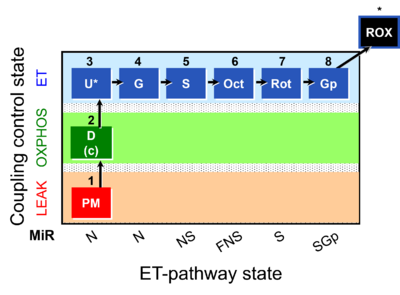 | |||||||||||||||||||||||||||||||||||||||||||||||||||||||
| SUIT-001 O2 ce-pce D003 | RP1 ce-pce | 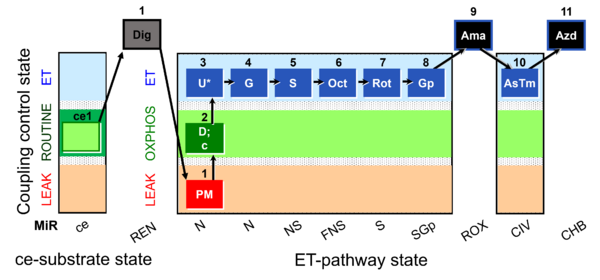 | |||||||||||||||||||||||||||||||||||||||||||||||||||||||
| SUIT-001 O2 ce-pce D004 | RP1 ce-pce blood | 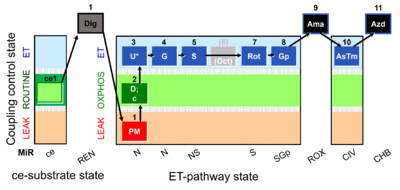 | |||||||||||||||||||||||||||||||||||||||||||||||||||||||
| SUIT-001 O2 mt D001 | RP1 mt | 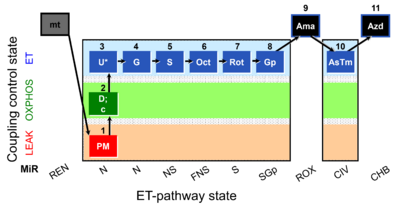 | |||||||||||||||||||||||||||||||||||||||||||||||||||||||
| SUIT-001 O2 pfi D002 | RP1 pfi | 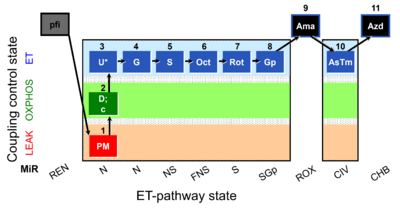 | |||||||||||||||||||||||||||||||||||||||||||||||||||||||
| SUIT-002 | RP2 | 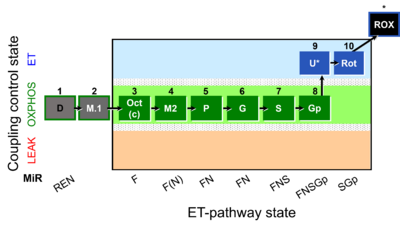 | |||||||||||||||||||||||||||||||||||||||||||||||||||||||
| SUIT-002 O2 ce-pce D007 | RP2 ce-pce | 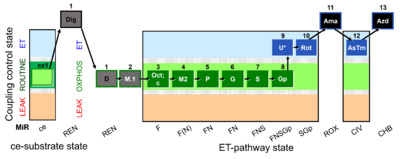 | |||||||||||||||||||||||||||||||||||||||||||||||||||||||
| SUIT-002 O2 ce-pce D007a | RP2 ce-pce blood |  | |||||||||||||||||||||||||||||||||||||||||||||||||||||||
| SUIT-002 O2 mt D005 | RP2 mt | 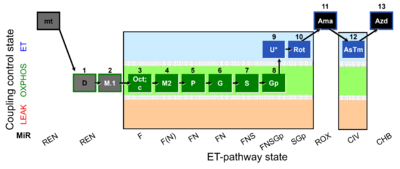 | |||||||||||||||||||||||||||||||||||||||||||||||||||||||
| SUIT-002 O2 pfi D006 | RP2 pfi |  | |||||||||||||||||||||||||||||||||||||||||||||||||||||||
| SUIT-003 | CCP-ce | 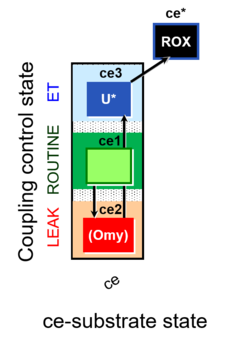 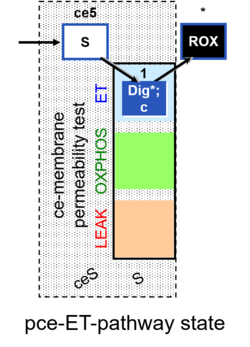 | |||||||||||||||||||||||||||||||||||||||||||||||||||||||
| SUIT-003 AmR ce D017 | CCP-ce S permeability test | 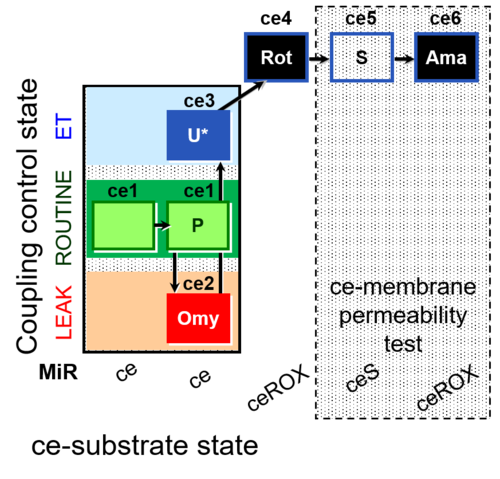 | |||||||||||||||||||||||||||||||||||||||||||||||||||||||
| SUIT-003 AmR ce D058 | AmR effect on ce | 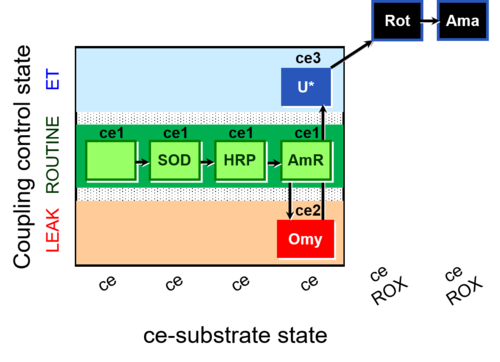 | |||||||||||||||||||||||||||||||||||||||||||||||||||||||
| SUIT-003 AmR ce D059 | AmR effect on ce - control | 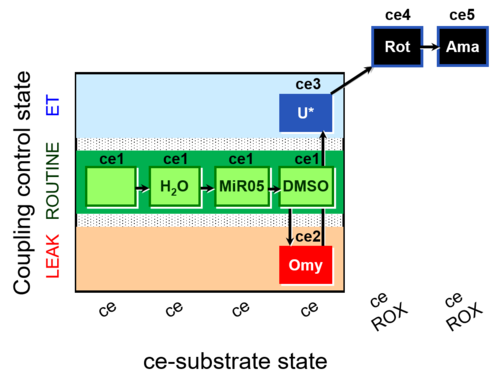 | |||||||||||||||||||||||||||||||||||||||||||||||||||||||
| SUIT-003 Ce1;ce1P;ce3U;ce4Glc;ce5M;ce6Rot;ce7S;1Dig;1c;2Ama;3AsTm;4Azd | cePMGlc,S | 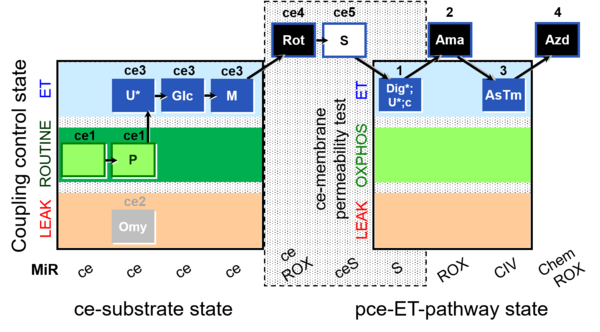 | |||||||||||||||||||||||||||||||||||||||||||||||||||||||
| SUIT-003 Ce1;ce1SD;ce2Omy;ce3U- | FNS(Oct,PGM) | 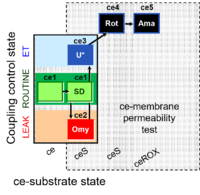 | |||||||||||||||||||||||||||||||||||||||||||||||||||||||
| SUIT-003 Ce1;ce1SD;ce3U;ce4Rot;ce5Ama | ceS | 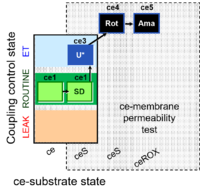 | |||||||||||||||||||||||||||||||||||||||||||||||||||||||
| SUIT-003 Ce1;ce2SD;ce3Omy;ce4U- | FNS(Oct,PGM) | 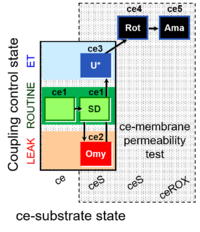 | |||||||||||||||||||||||||||||||||||||||||||||||||||||||
| SUIT-003 Ce1;ce2SD;ce3U;ce4Rot;ce5Ama | ceS |  | |||||||||||||||||||||||||||||||||||||||||||||||||||||||
| SUIT-003 Ce1;ce2U;ce3Rot;ce4S;ce5Ama | ceS | 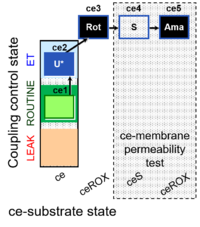 | |||||||||||||||||||||||||||||||||||||||||||||||||||||||
| SUIT-003 Ce1;ce2U- | ce | 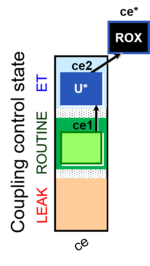 | |||||||||||||||||||||||||||||||||||||||||||||||||||||||
| SUIT-003 Ce1;ce3U;ce4Rot;ce5S;ce6Ama | ceS | 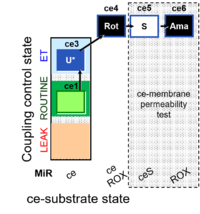 | |||||||||||||||||||||||||||||||||||||||||||||||||||||||
| SUIT-003 Ce1;ce3U- | ce | 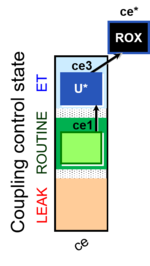 | |||||||||||||||||||||||||||||||||||||||||||||||||||||||
| SUIT-003 O2 ce D009 | CCP-ce short | 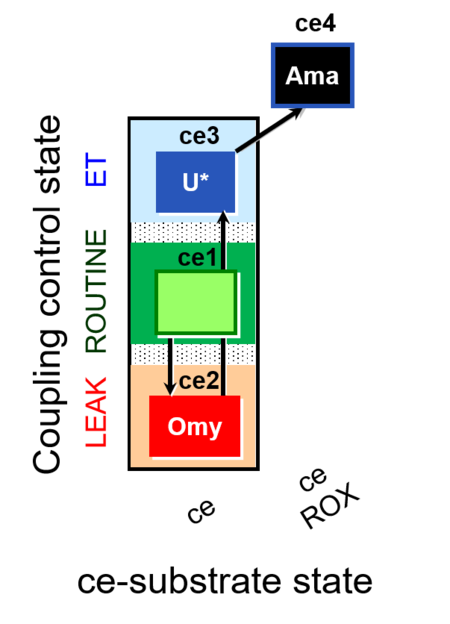 | |||||||||||||||||||||||||||||||||||||||||||||||||||||||
| SUIT-003 O2 ce D012 | CCP-ce(P) | 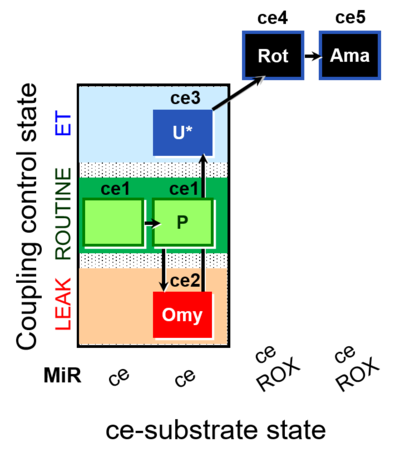 | |||||||||||||||||||||||||||||||||||||||||||||||||||||||
| SUIT-003 O2 ce D028 | CCP-ce S permeability test | 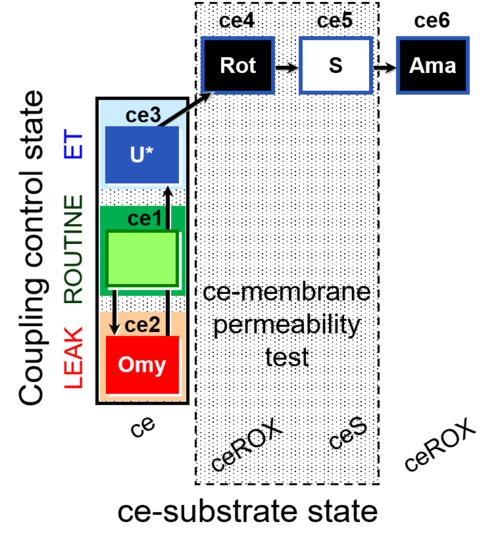 | |||||||||||||||||||||||||||||||||||||||||||||||||||||||
| SUIT-003 O2 ce D037 | CCP-ce Crabtree_R | 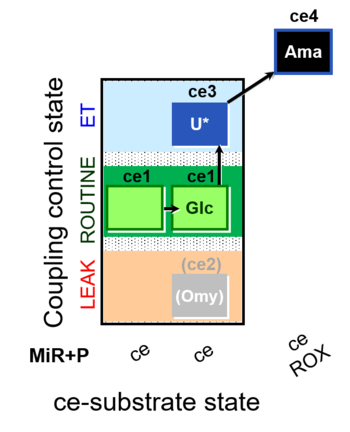 | |||||||||||||||||||||||||||||||||||||||||||||||||||||||
| SUIT-003 O2 ce D038 | CCP-ce Crabtree_E | 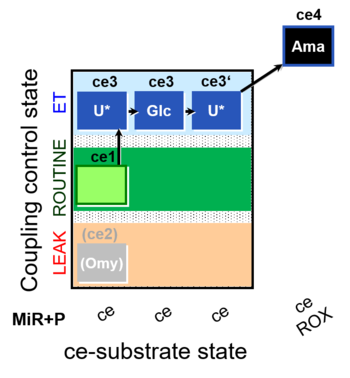 | |||||||||||||||||||||||||||||||||||||||||||||||||||||||
| SUIT-003 O2 ce D039 | CCP-ce microalgae | 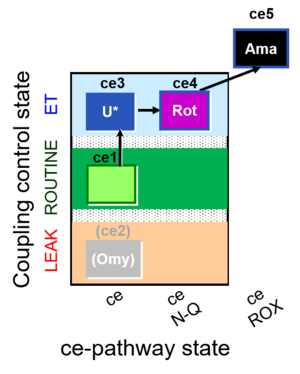 | |||||||||||||||||||||||||||||||||||||||||||||||||||||||
| SUIT-003 O2 ce D050 | CCP-ce Snv | 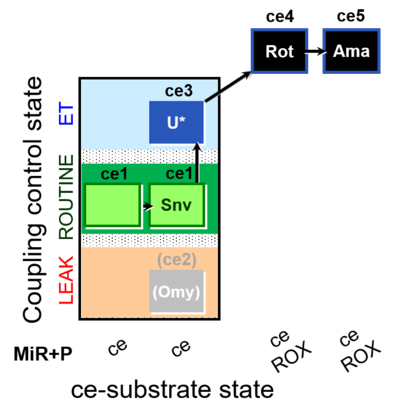 | |||||||||||||||||||||||||||||||||||||||||||||||||||||||
| SUIT-003 O2 ce D060 | CCP-ce Snv,Mnanv | 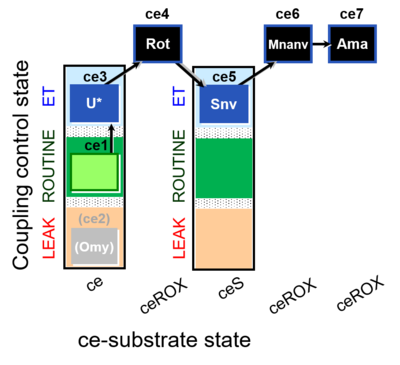 | |||||||||||||||||||||||||||||||||||||||||||||||||||||||
| SUIT-003 O2 ce D061 | CCP-ce Snv,Mnanv - control | 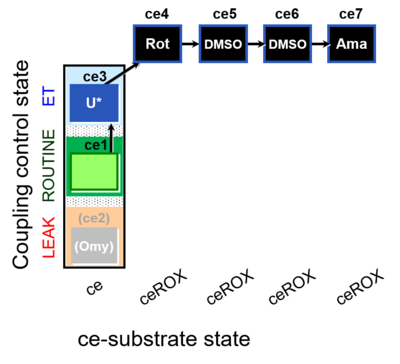 | |||||||||||||||||||||||||||||||||||||||||||||||||||||||
| SUIT-003 O2 ce D062 | CCP-ce Snv - control | 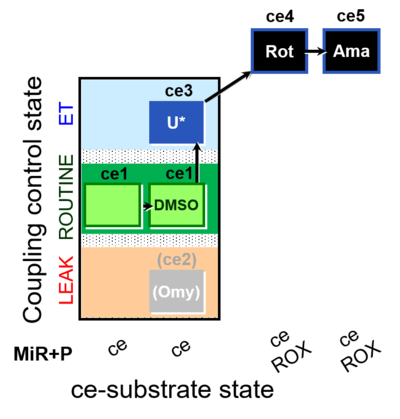 | |||||||||||||||||||||||||||||||||||||||||||||||||||||||
| SUIT-003 O2 ce-pce D013 | CCVP-Glc,M | 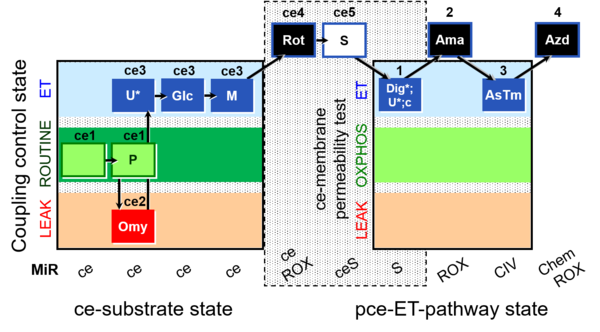 | |||||||||||||||||||||||||||||||||||||||||||||||||||||||
| SUIT-003 O2 ce-pce D018 | CCVP-Glc | 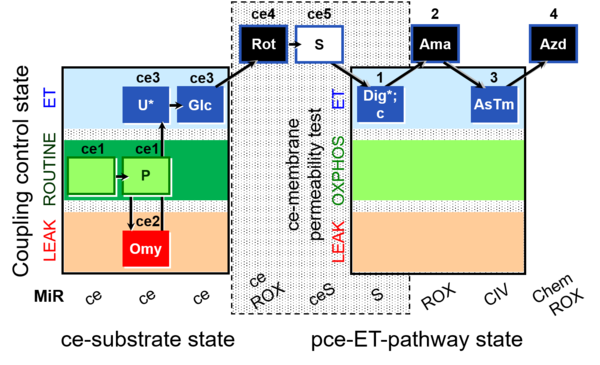 | |||||||||||||||||||||||||||||||||||||||||||||||||||||||
| SUIT-003 O2 ce-pce D020 | CCVP | 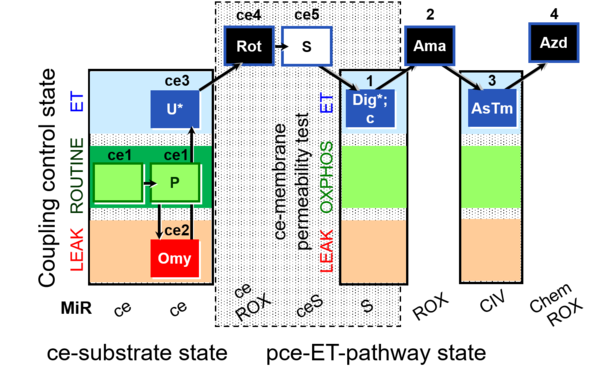 | |||||||||||||||||||||||||||||||||||||||||||||||||||||||
| SUIT-003 pH ce D067 | CCP-Crabtree with glycolysis inhibition | 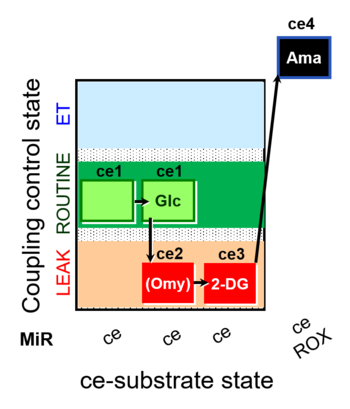 | |||||||||||||||||||||||||||||||||||||||||||||||||||||||
| SUIT-004 | RP1-short | 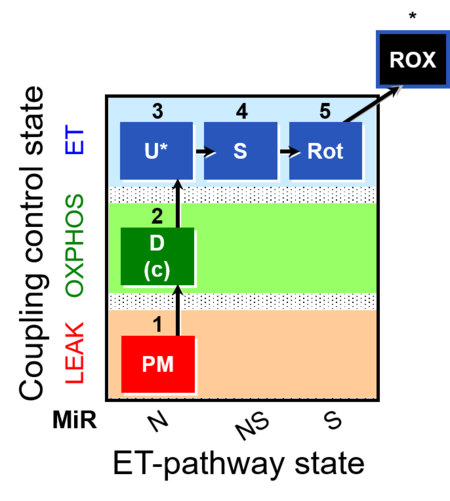 | |||||||||||||||||||||||||||||||||||||||||||||||||||||||
| SUIT-004 O2 pfi D010 | RP1-short pfi | 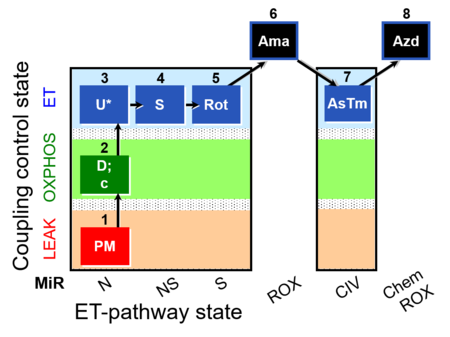 | |||||||||||||||||||||||||||||||||||||||||||||||||||||||
| SUIT-005 | RP2-short | 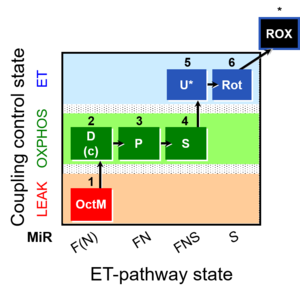 | |||||||||||||||||||||||||||||||||||||||||||||||||||||||
| SUIT-005 O2 pfi D011 | RP2-short pfi | 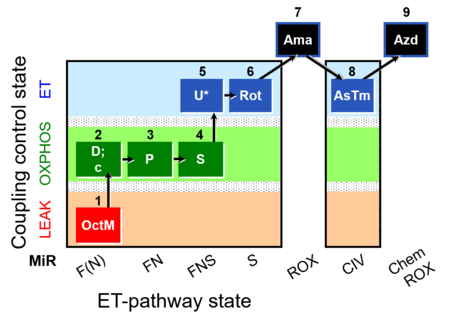 | |||||||||||||||||||||||||||||||||||||||||||||||||||||||
| SUIT-006 | CCP-mtprep | 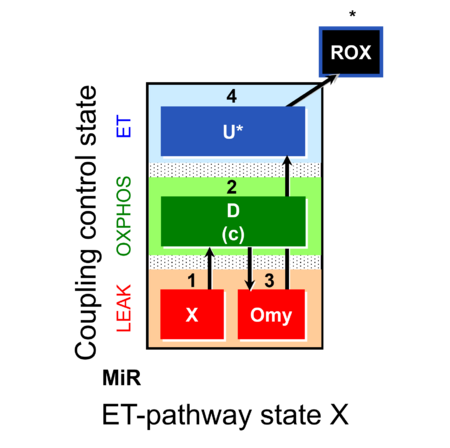 | |||||||||||||||||||||||||||||||||||||||||||||||||||||||
| SUIT-006 02 mt D108 | 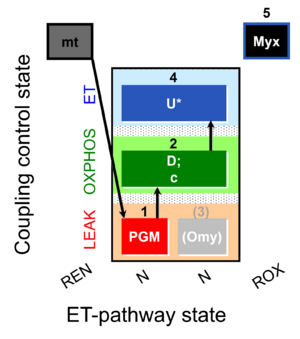 | ||||||||||||||||||||||||||||||||||||||||||||||||||||||||
| SUIT-006 AmR mt D048 | CCP mt PM - AmR | 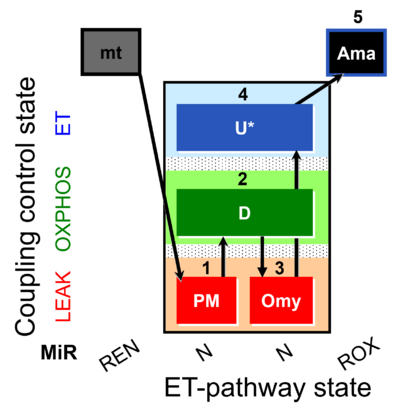 | |||||||||||||||||||||||||||||||||||||||||||||||||||||||
| SUIT-006 Fluo mt D034 | CCP mt PM - Fluo | 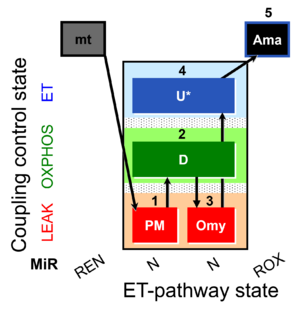 | |||||||||||||||||||||||||||||||||||||||||||||||||||||||
| SUIT-006 MgG ce-pce D085 | CCP MgG ce-pce | 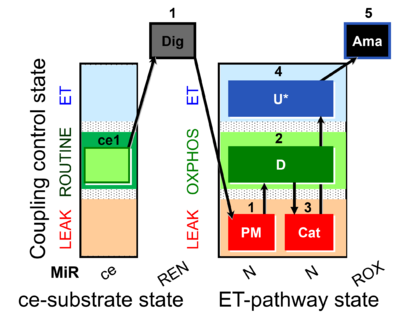 | |||||||||||||||||||||||||||||||||||||||||||||||||||||||
| SUIT-006 MgG mt D055 | CCP MgG mt | 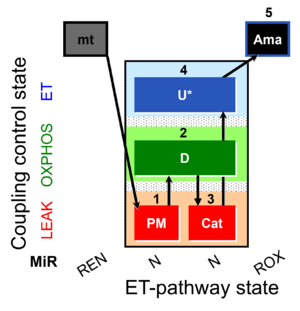 | |||||||||||||||||||||||||||||||||||||||||||||||||||||||
| SUIT-006 NADH mt D084 | 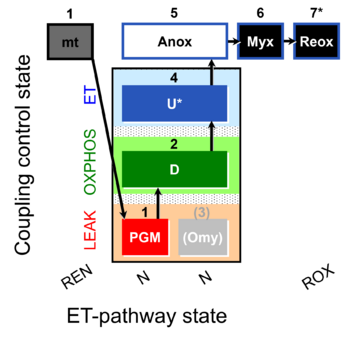 | ||||||||||||||||||||||||||||||||||||||||||||||||||||||||
| SUIT-006 O2 ce-pce D029 | CCP ce-pce PM | 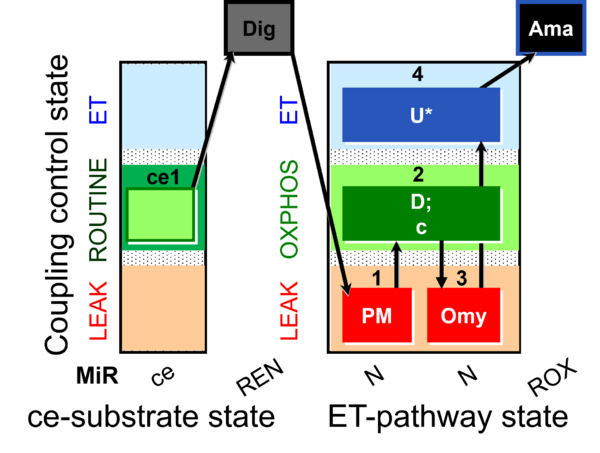 | |||||||||||||||||||||||||||||||||||||||||||||||||||||||
| SUIT-006 O2 mt D022 | CCP mt S(Rot) | 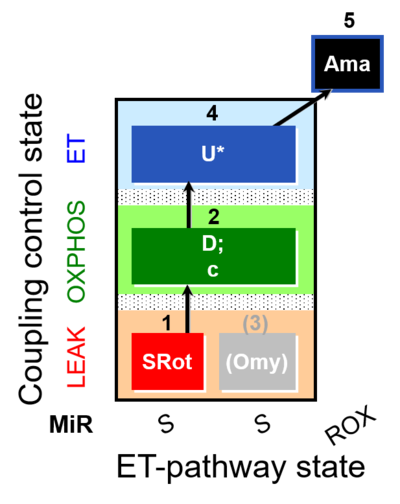 | |||||||||||||||||||||||||||||||||||||||||||||||||||||||
| SUIT-006 O2 mt D047 | CCP mt PM | 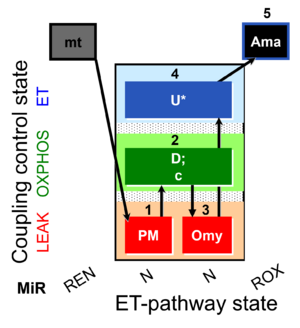 | |||||||||||||||||||||||||||||||||||||||||||||||||||||||
| SUIT-006 Q ce-pce D073 | CCP ce-pce S(Rot) | 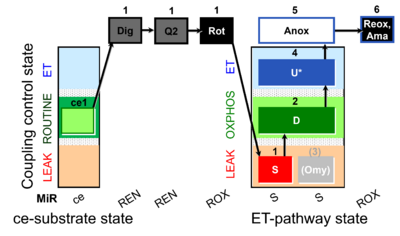 | |||||||||||||||||||||||||||||||||||||||||||||||||||||||
| SUIT-006 Q mt D071 | CCP mt S(Rot) | 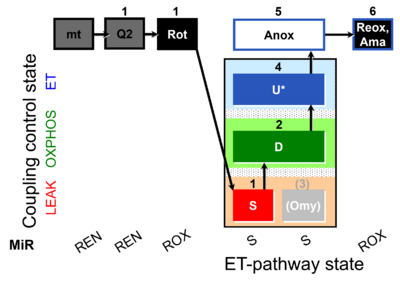 | |||||||||||||||||||||||||||||||||||||||||||||||||||||||
| SUIT-007 | Glutamate anaplerosis | 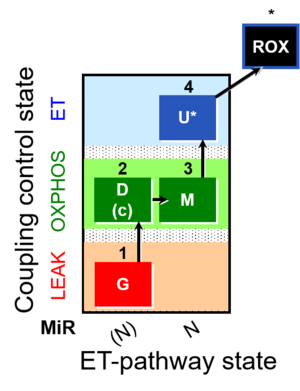 | |||||||||||||||||||||||||||||||||||||||||||||||||||||||
| SUIT-007 O2 ce-pce D030 | Glutamate anaplerotic pathway | 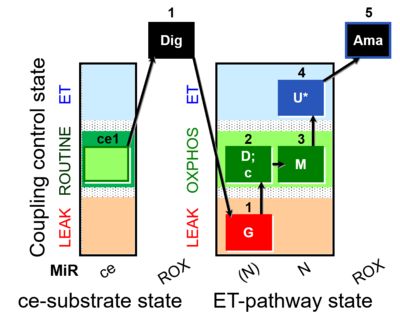 | |||||||||||||||||||||||||||||||||||||||||||||||||||||||
| SUIT-008 | PM+G+S_OXPHOS+Rot_ET | 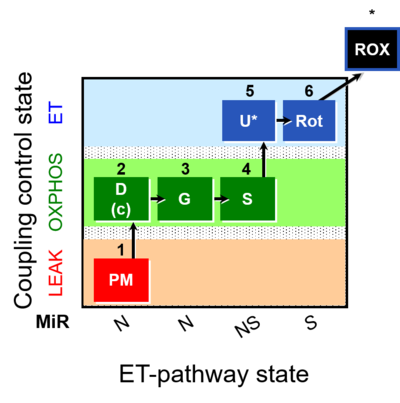 | |||||||||||||||||||||||||||||||||||||||||||||||||||||||
| SUIT-008 O2 ce-pce D025 | Q-junction ce-pce | 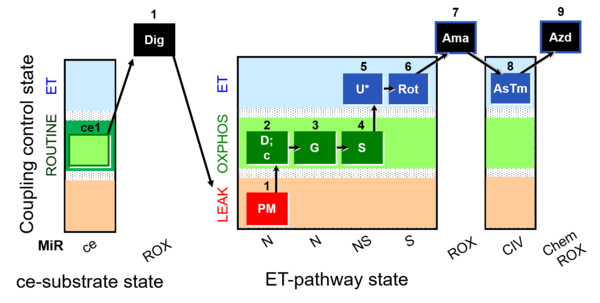 | |||||||||||||||||||||||||||||||||||||||||||||||||||||||
| SUIT-008 O2 mt D026 | Q-junction mtprep | 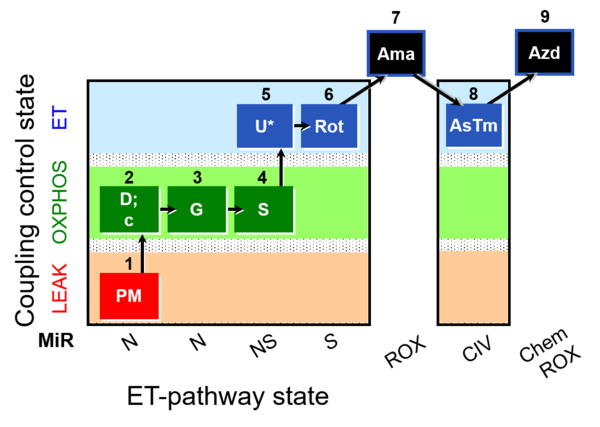 | |||||||||||||||||||||||||||||||||||||||||||||||||||||||
| SUIT-008 O2 pce D25 | NS(PGM) | 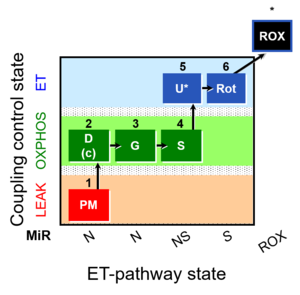 | |||||||||||||||||||||||||||||||||||||||||||||||||||||||
| SUIT-008 O2 pfi D014 | 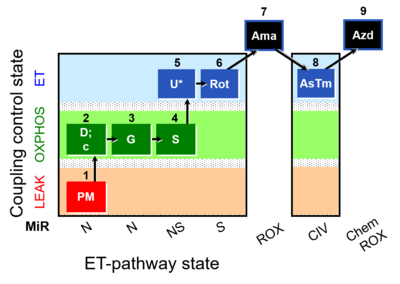 | ||||||||||||||||||||||||||||||||||||||||||||||||||||||||
| SUIT-009 | 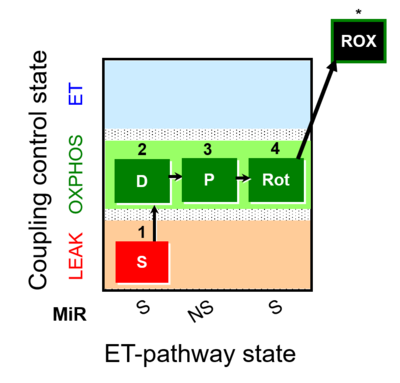 | ||||||||||||||||||||||||||||||||||||||||||||||||||||||||
| SUIT-009 AmR ce-pce D019 | H2O2 RET ce-pce S_L | 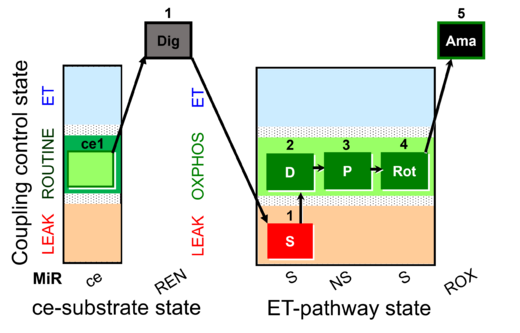 | |||||||||||||||||||||||||||||||||||||||||||||||||||||||
| SUIT-009 AmR mt D021 | H2O2 mtprep | 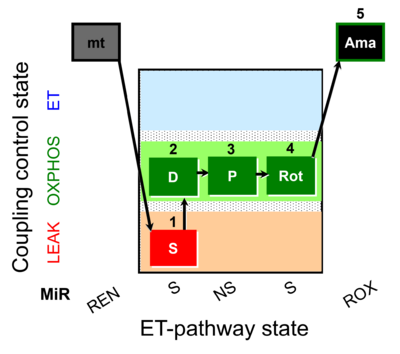 | |||||||||||||||||||||||||||||||||||||||||||||||||||||||
| SUIT-009 O2 ce-pce D016 | 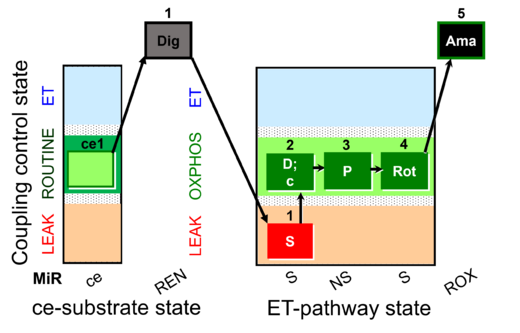 | ||||||||||||||||||||||||||||||||||||||||||||||||||||||||
| SUIT-009 O2 mt D015 | 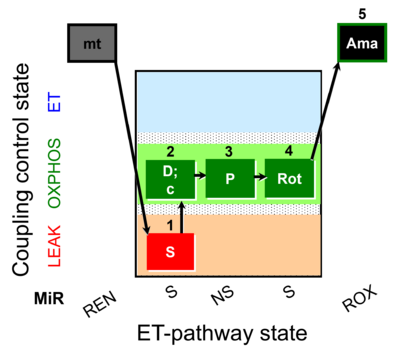 | ||||||||||||||||||||||||||||||||||||||||||||||||||||||||
| SUIT-010 | Digitonin test | 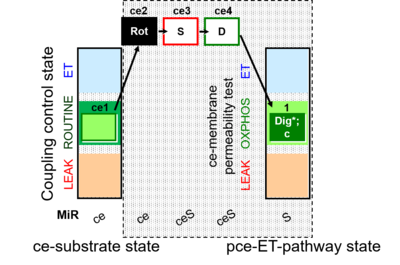 | |||||||||||||||||||||||||||||||||||||||||||||||||||||||
| SUIT-010 O2 ce-pce D008 | Dig titration-pce |  | |||||||||||||||||||||||||||||||||||||||||||||||||||||||
| SUIT-011 | GM+S_OXPHOS+Rot_ET | 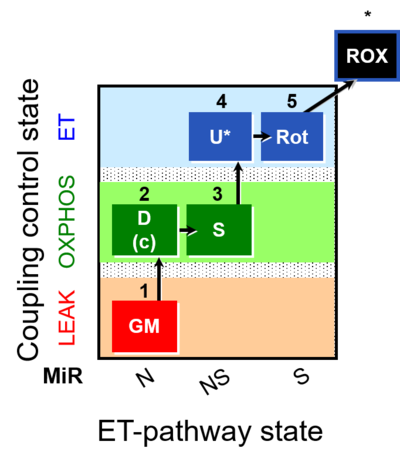 | |||||||||||||||||||||||||||||||||||||||||||||||||||||||
| SUIT-011 O2 pfi D024 | NS physiological maximum capapcity in fibres |  | |||||||||||||||||||||||||||||||||||||||||||||||||||||||
| SUIT-012 | PM+G_OXPHOS | 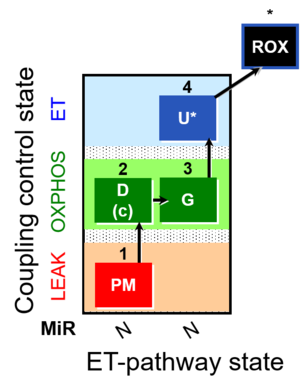 | |||||||||||||||||||||||||||||||||||||||||||||||||||||||
| SUIT-012 O2 ce-pce D052 | N(PGM) | 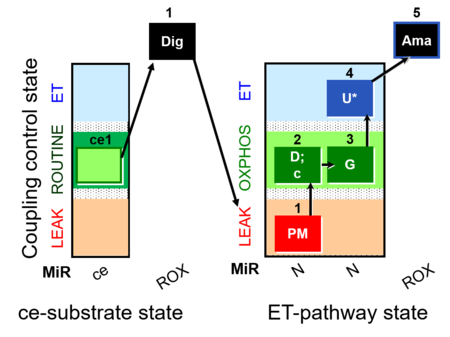 | |||||||||||||||||||||||||||||||||||||||||||||||||||||||
| SUIT-012 O2 mt D027 | N CCP mtprep | 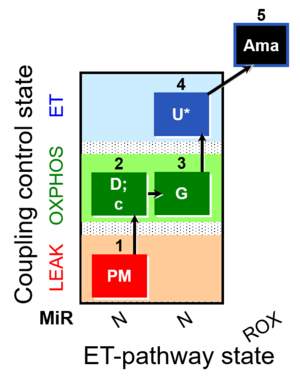 | |||||||||||||||||||||||||||||||||||||||||||||||||||||||
| SUIT-013 | ce | 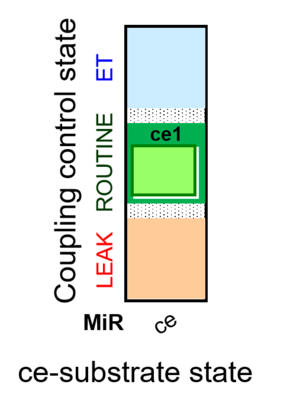 | |||||||||||||||||||||||||||||||||||||||||||||||||||||||
| SUIT-013 AmR ce D023 | O2 dependence of H2O2 production ce | 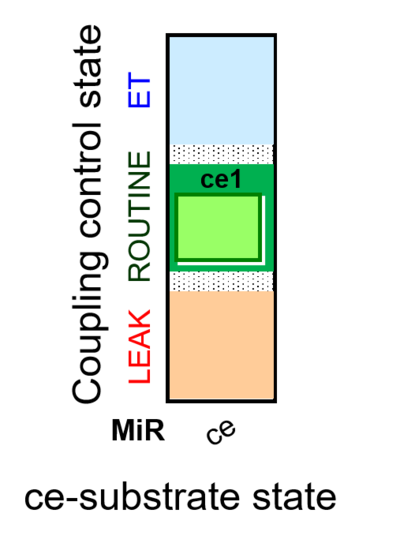 | |||||||||||||||||||||||||||||||||||||||||||||||||||||||
| SUIT-014 | GM+P+S_OXPHOS+Rot_ET | 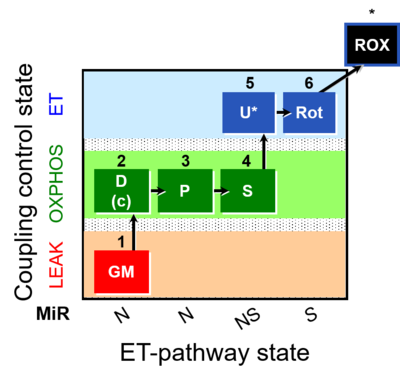 | |||||||||||||||||||||||||||||||||||||||||||||||||||||||
| SUIT-014 O2 pfi D042 | NS(PGM) | 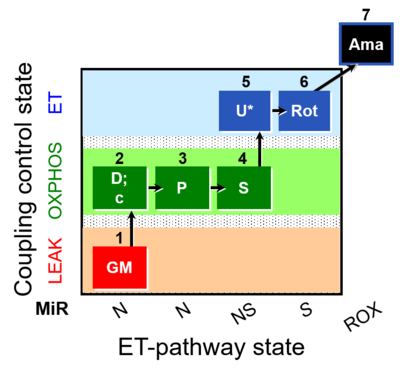 | |||||||||||||||||||||||||||||||||||||||||||||||||||||||
| SUIT-015 | F+G+P+S_OXPHOS+Rot_ET | 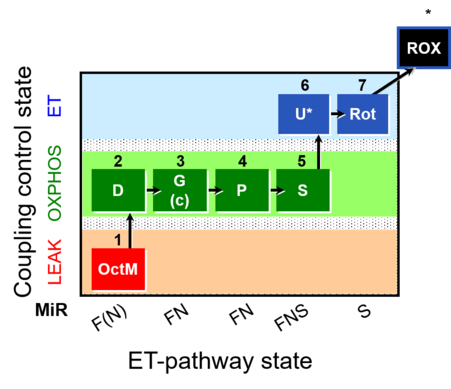 | |||||||||||||||||||||||||||||||||||||||||||||||||||||||
| SUIT-015 O2 pti D043 | FNS(Oct,PGM) | 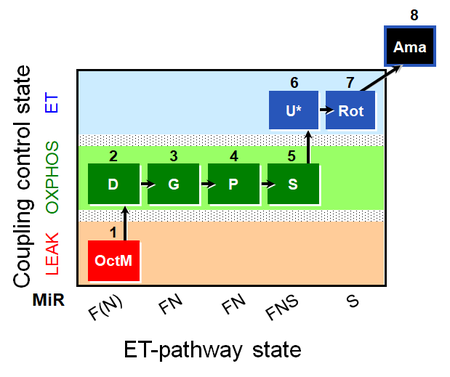 | |||||||||||||||||||||||||||||||||||||||||||||||||||||||
| SUIT-016 | F+G+S+Rot_OXPHOS+Omy | 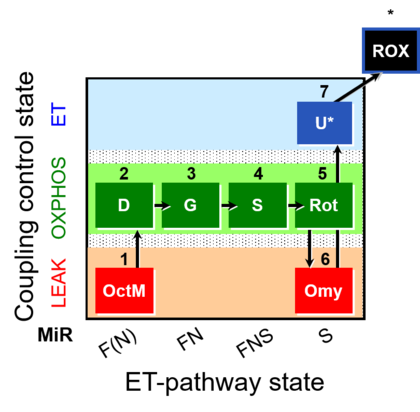 | |||||||||||||||||||||||||||||||||||||||||||||||||||||||
| SUIT-016 O2 pfi D044 | FNS(Oct,GM) |  | |||||||||||||||||||||||||||||||||||||||||||||||||||||||
| SUIT-017 | F+G+S_OXPHOS+Rot_ET | 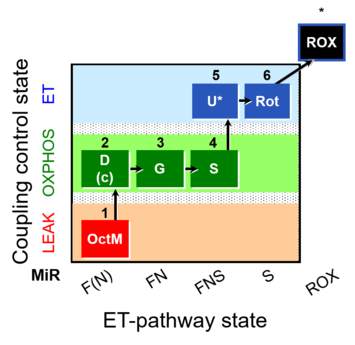 | |||||||||||||||||||||||||||||||||||||||||||||||||||||||
| SUIT-017 O2 mt D046 | FNS(Oct,GM) | 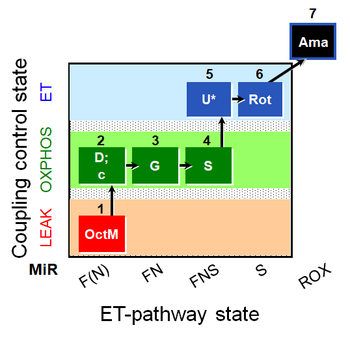 | |||||||||||||||||||||||||||||||||||||||||||||||||||||||
| SUIT-017 O2 pfi D049 | FNS(Oct,GM) |  | |||||||||||||||||||||||||||||||||||||||||||||||||||||||
| SUIT-018 | O2 dependence-H2O2 | 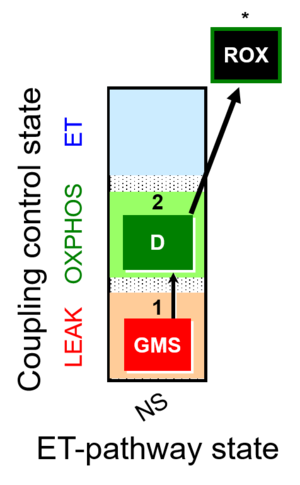 | |||||||||||||||||||||||||||||||||||||||||||||||||||||||
| SUIT-018 AmR ce-pce D068 | O2 dependence-H2O2 | 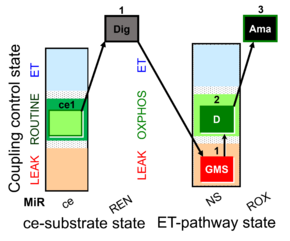 | |||||||||||||||||||||||||||||||||||||||||||||||||||||||
| SUIT-018 AmR mt D031 | O2 dependence-H2O2 | 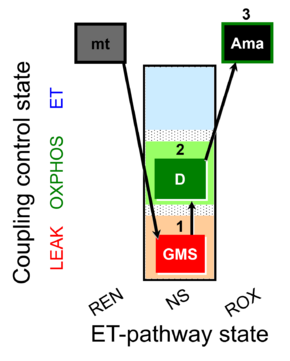 | |||||||||||||||||||||||||||||||||||||||||||||||||||||||
| SUIT-018 AmR mt D040 | NS(GM) |  | |||||||||||||||||||||||||||||||||||||||||||||||||||||||
| SUIT-018 AmR mt D041 | O2 dependence-H2O2 |  | |||||||||||||||||||||||||||||||||||||||||||||||||||||||
| SUIT-018 O2 mt D054 | 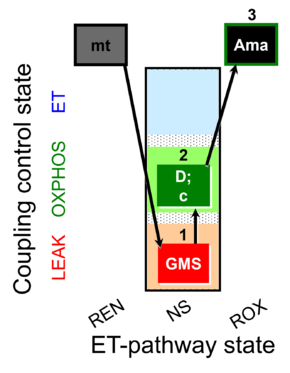 | ||||||||||||||||||||||||||||||||||||||||||||||||||||||||
| SUIT-019 | Pal+Oct+P+G_OXPHOS+S+Rot_ET | 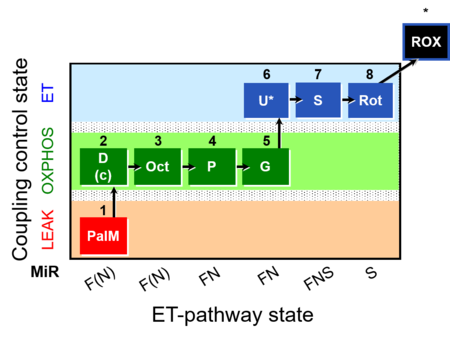 | |||||||||||||||||||||||||||||||||||||||||||||||||||||||
| SUIT-019 O2 pfi D045 | FNS(PalOct,PGM) | 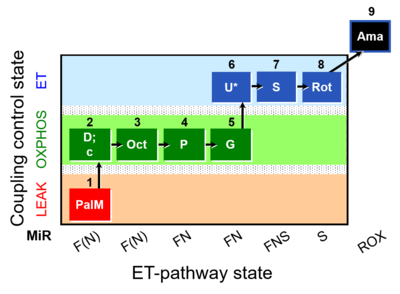 | |||||||||||||||||||||||||||||||||||||||||||||||||||||||
| SUIT-020 | PM+G+S+Rot_OXPHOS+Omy | 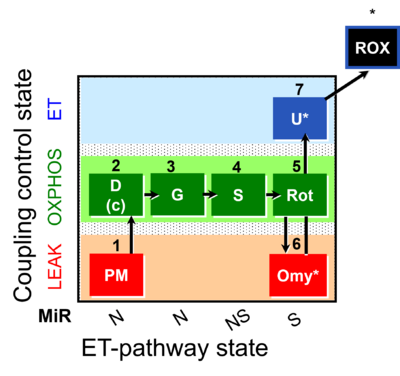 | |||||||||||||||||||||||||||||||||||||||||||||||||||||||
| SUIT-020 Fluo mt D033 | NS(PGM) | 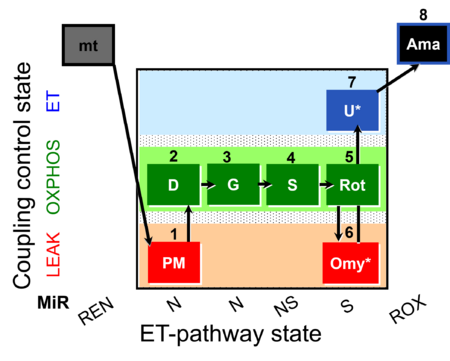 | |||||||||||||||||||||||||||||||||||||||||||||||||||||||
| SUIT-020 O2 mt D032 | Q-junction additivity and respiratory control for membrane potential | 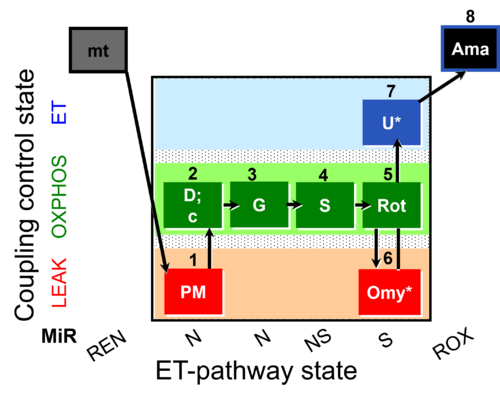 | |||||||||||||||||||||||||||||||||||||||||||||||||||||||
| SUIT-021 | OXPHOS (GM+S+Rot+Omy) | 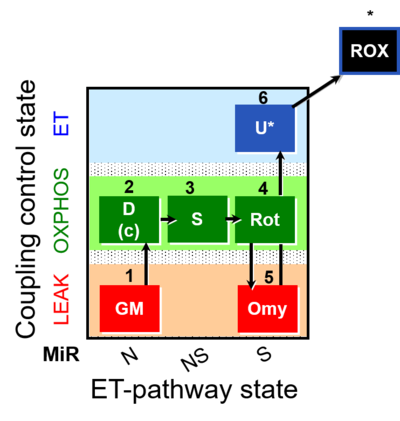 | |||||||||||||||||||||||||||||||||||||||||||||||||||||||
| SUIT-021 Fluo mt D036 | NS(GM) | 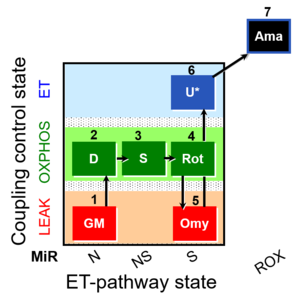 | |||||||||||||||||||||||||||||||||||||||||||||||||||||||
| SUIT-021 O2 mt D035 | NS(GM) |  | |||||||||||||||||||||||||||||||||||||||||||||||||||||||
| SUIT-022 | AOX (ce CN+SHAM) | 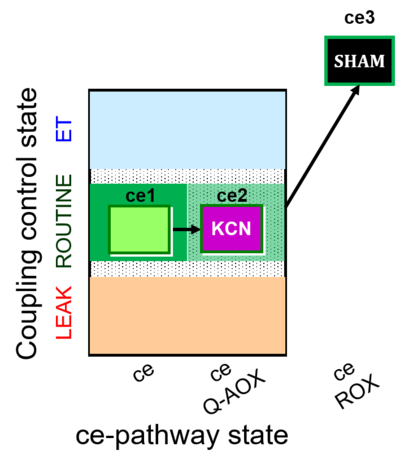 | |||||||||||||||||||||||||||||||||||||||||||||||||||||||
| SUIT-022 O2 ce D051 | AOX-ce CN+SHAM | 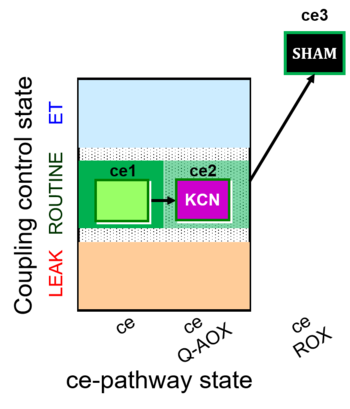 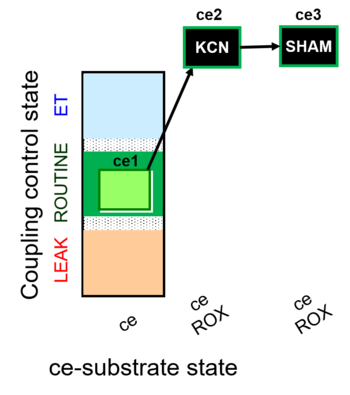 | |||||||||||||||||||||||||||||||||||||||||||||||||||||||
| SUIT-023 | AOX-ce SHAM+CN | 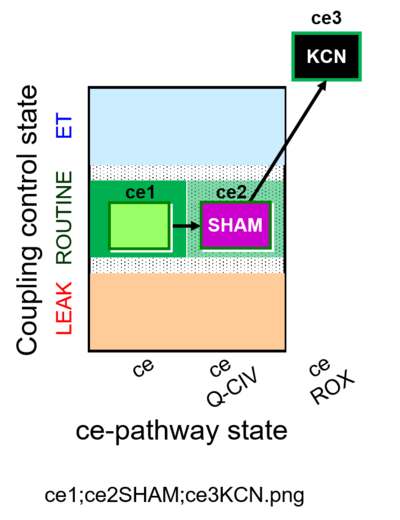 | |||||||||||||||||||||||||||||||||||||||||||||||||||||||
| SUIT-023 O2 ce D053 | AOX-ce SHAM+CN | 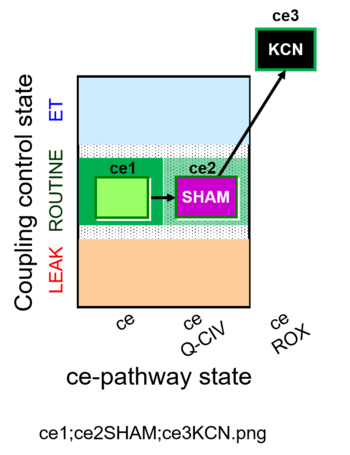 | |||||||||||||||||||||||||||||||||||||||||||||||||||||||
| SUIT-024 | ATPase (PM) | 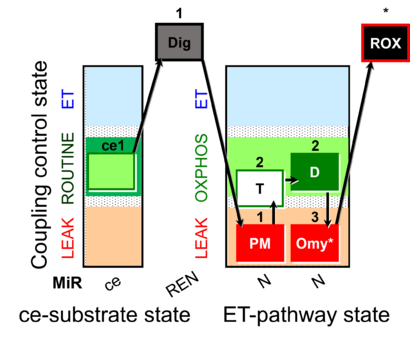 | |||||||||||||||||||||||||||||||||||||||||||||||||||||||
| SUIT-024 O2 ce-pce D056 | N(PM) | 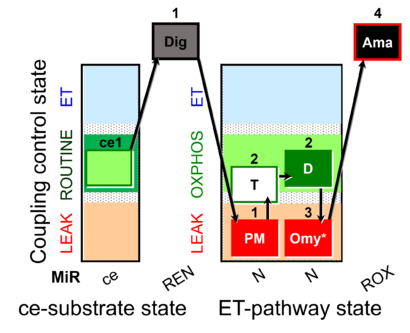 | |||||||||||||||||||||||||||||||||||||||||||||||||||||||
| SUIT-025 | OXPHOS (F+M+P+G+S+Rot) | 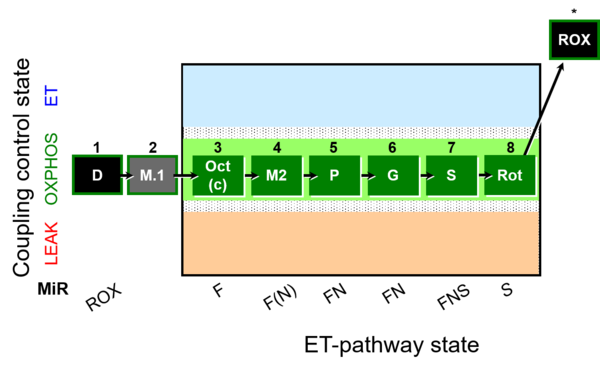 | |||||||||||||||||||||||||||||||||||||||||||||||||||||||
| SUIT-025 O2 mt D057 | FNS(Oct,PGM) | 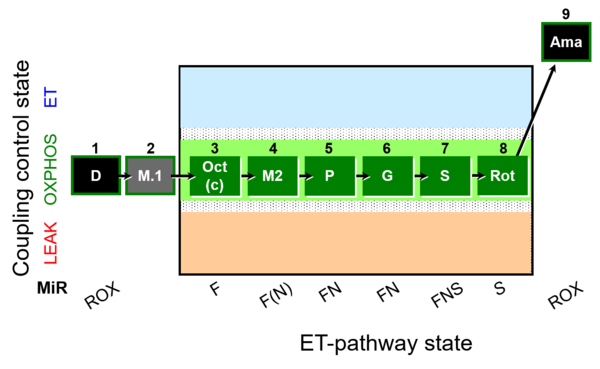 | |||||||||||||||||||||||||||||||||||||||||||||||||||||||
| SUIT-026 | RET | 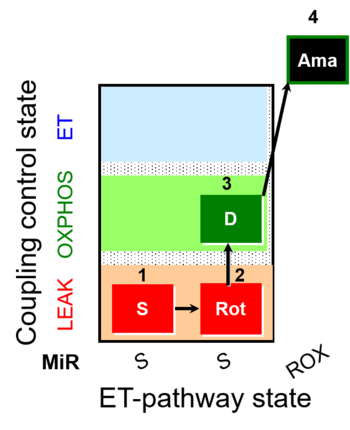 | |||||||||||||||||||||||||||||||||||||||||||||||||||||||
| SUIT-026 AmR ce-pce D087 | RET | 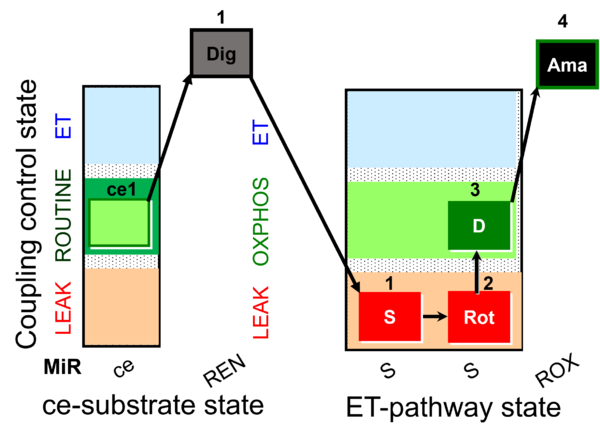 | |||||||||||||||||||||||||||||||||||||||||||||||||||||||
| SUIT-026 AmR mt D064 | RET | 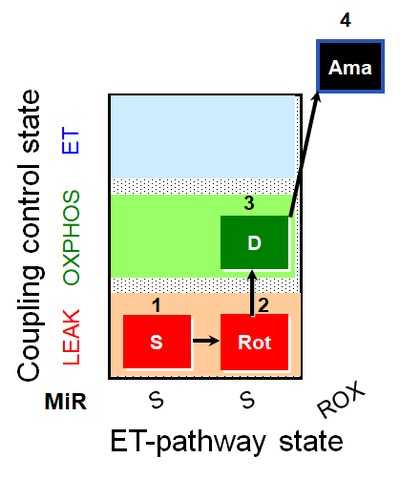 | |||||||||||||||||||||||||||||||||||||||||||||||||||||||
| SUIT-026 AmR mt D077 | RET |  | |||||||||||||||||||||||||||||||||||||||||||||||||||||||
| SUIT-026 O2 ce-pce D088 | RET (respiratory control) of SUIT-026 AmR ce-pce D087 | File:Ce1;1Dig;1S;2Rot;3D;3c;4Ama.png | |||||||||||||||||||||||||||||||||||||||||||||||||||||||
| SUIT-026 O2 mt D063 | RET (respiratory control) of SUIT-026 AmR mt D064 | 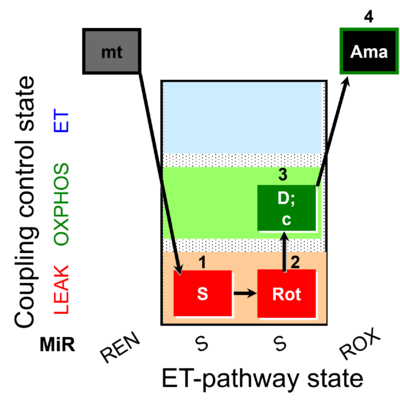 | |||||||||||||||||||||||||||||||||||||||||||||||||||||||
| SUIT-027 | Malate anaplerosis | 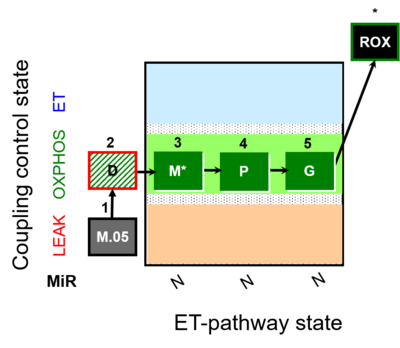 | |||||||||||||||||||||||||||||||||||||||||||||||||||||||
| SUIT-027 O2 ce-pce D065 | Malate anaplerosis | 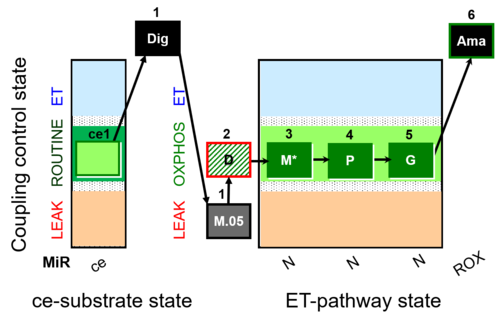 | |||||||||||||||||||||||||||||||||||||||||||||||||||||||
| SUIT-028 | NS(PGM) | 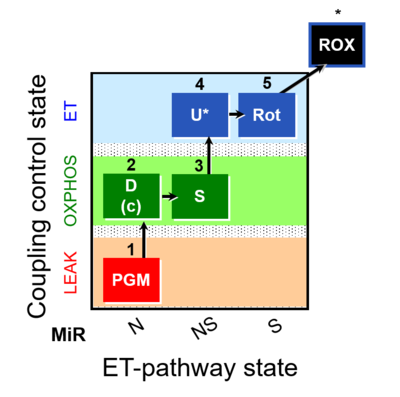 | |||||||||||||||||||||||||||||||||||||||||||||||||||||||
| SUIT-029 O2 mt D066 | QC_imt_PM_T+OXPHOS+c+Omy_ET_G+S+Rot | 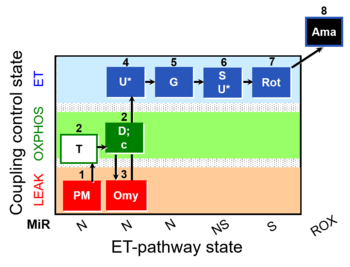 | |||||||||||||||||||||||||||||||||||||||||||||||||||||||
| SUIT-031 | PM+S+Rot | 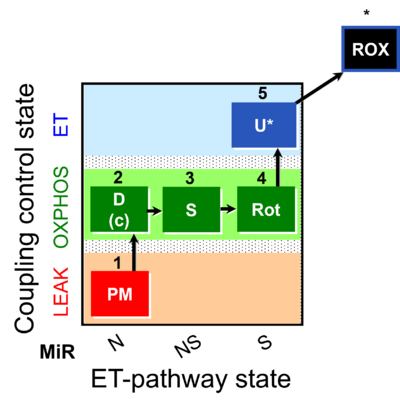 | |||||||||||||||||||||||||||||||||||||||||||||||||||||||
| SUIT-031 O2 ce-pce D079 | PM+S+Rot | 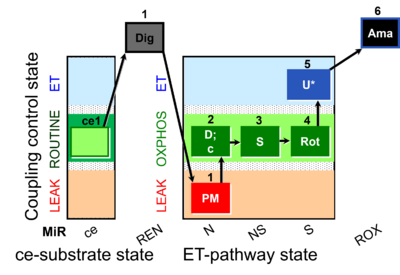 | |||||||||||||||||||||||||||||||||||||||||||||||||||||||
| SUIT-031 O2 mt D075 | PM+S+Rot | 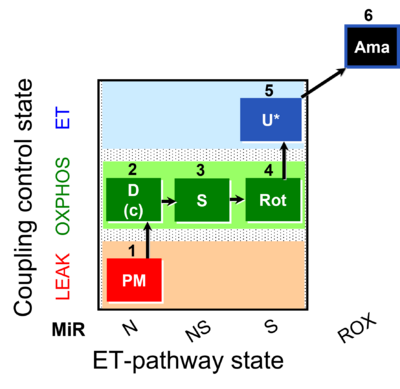 | |||||||||||||||||||||||||||||||||||||||||||||||||||||||
| SUIT-031 Q ce-pce D074 | PM+S+Rot | 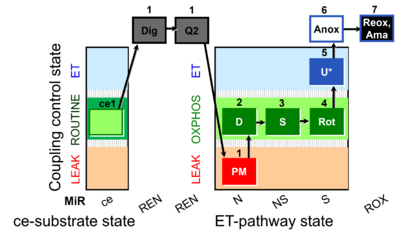 | |||||||||||||||||||||||||||||||||||||||||||||||||||||||
| SUIT-031 Q mt D072 | PM+S+Rot | 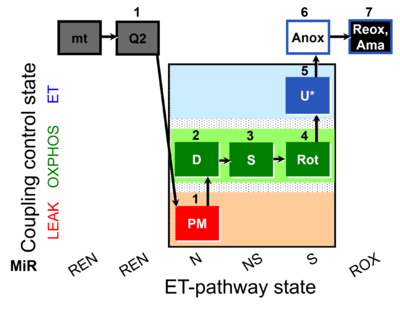 | |||||||||||||||||||||||||||||||||||||||||||||||||||||||
| SUIT-032 NADH mt D078 | 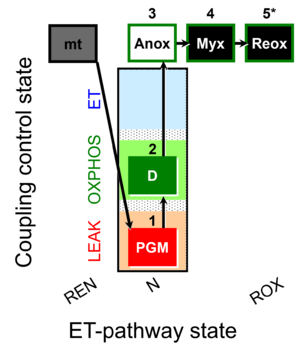 | ||||||||||||||||||||||||||||||||||||||||||||||||||||||||
| SUIT-032 O2 mt D109 | 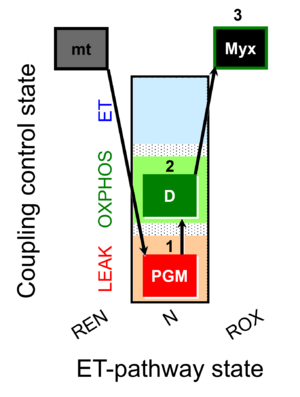 | ||||||||||||||||||||||||||||||||||||||||||||||||||||||||
| SUIT-033 | CCP-mtprep | 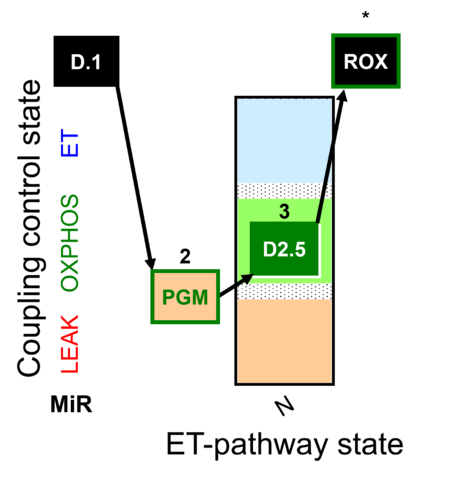 | |||||||||||||||||||||||||||||||||||||||||||||||||||||||
| SUIT-033 NADH mt D081 | 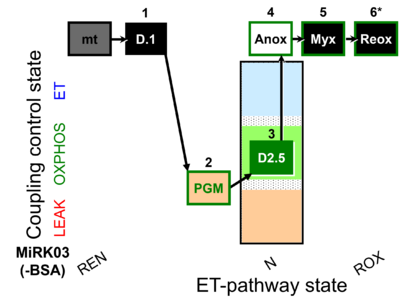 | ||||||||||||||||||||||||||||||||||||||||||||||||||||||||
| SUIT-033 O2 mt D110 | 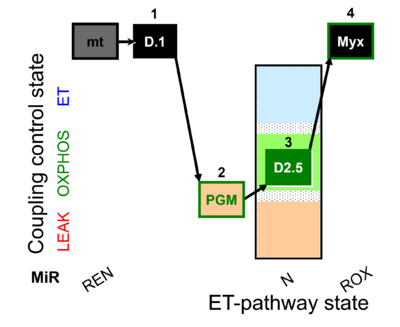 | ||||||||||||||||||||||||||||||||||||||||||||||||||||||||
| SUIT-034 NADH mt D082 | 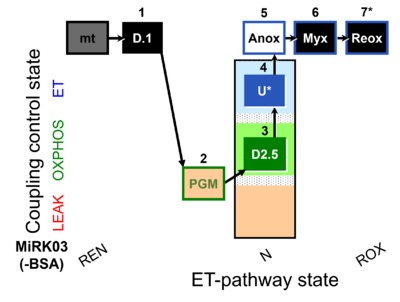 | ||||||||||||||||||||||||||||||||||||||||||||||||||||||||
| SUIT-034 O2 mt D111 | 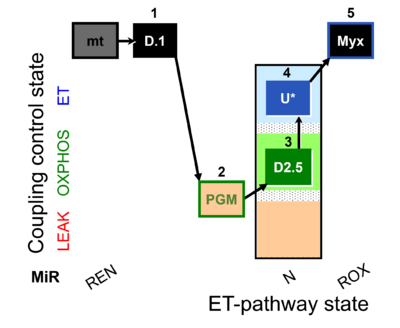 | ||||||||||||||||||||||||||||||||||||||||||||||||||||||||
| SUIT-036 O2 mt D089 | FAO(Pal) & M kinetics | 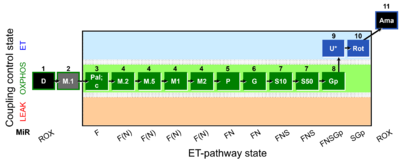 | |||||||||||||||||||||||||||||||||||||||||||||||||||||||
| SUIT-037 O2 mt D090 | FAO(Oct) & M kinetics | 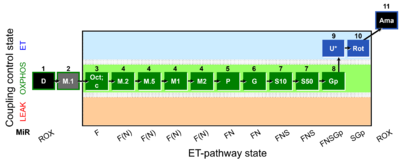 | |||||||||||||||||||||||||||||||||||||||||||||||||||||||
| SUIT-038 O2 mt D091 | FAO control & M kinetics | 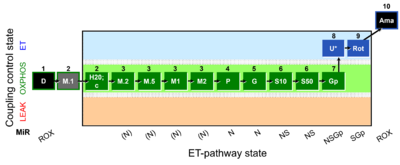 | |||||||||||||||||||||||||||||||||||||||||||||||||||||||
| SUIT-039 O2 mt D092 | FAO and NS-pathways | 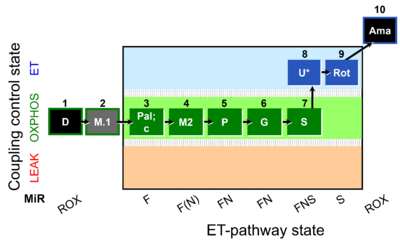 | |||||||||||||||||||||||||||||||||||||||||||||||||||||||
| SUIT-039 O2 pfi D093 | FAO and NS-pathways |  | |||||||||||||||||||||||||||||||||||||||||||||||||||||||
| SUIT-040 O2 mt D094 | FAO and NSGp-pathways | 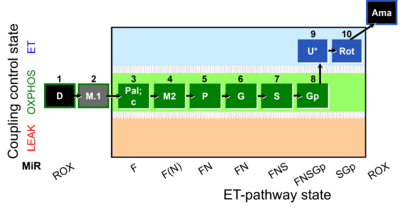 | |||||||||||||||||||||||||||||||||||||||||||||||||||||||
| SUIT-040 O2 pfi D095 | FAO and NSGp-pathways |  | |||||||||||||||||||||||||||||||||||||||||||||||||||||||
| SUIT-041 O2 mt D096 | Optimum [acylcarnitine] test | 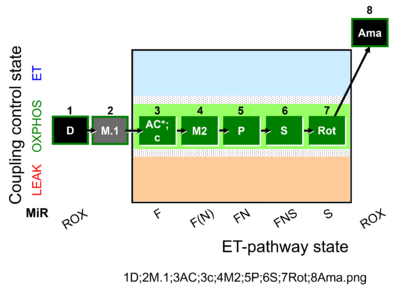 | |||||||||||||||||||||||||||||||||||||||||||||||||||||||
| SUIT: Browse DL-Protocols and templates | A comprehensive library of SUIT protocols including DatLab example traces, instructions, brief explanatory texts, links to relevant pages, representative diagrams and templates for data evaluation can be browsed from inside DatLab 7.4. Click on menu [Protocols]\SUIT: Browse DL-Protocols and templates to open a folder with all the SUIT protocols provided with the DatLab 7.4. DL-Protocols (DLP) for different sample preparations can be chosen to assess multiple sequences of respiratory coupling control and ET-pathway states. DL-Protocols posses unique D## codes and comprise a fixed sequence of events and marks which cannot be changed by the user. However, the users can edit titration volumes and concentrations in the Overview window of a DL-protocol, save the overview, and export the file as a user-specific DL-Protocol [File / Export / A or B: Export DL-Protocol User (*.DLPU)]. In DatLab 7.4, fixed sequence of events and marks can be changed (Skip/Added) in a SUIT protocol by the user. Moreover, editions of text, instructions, concentrations and titration volumes of injections in a specific DL-Protocol can be edited and saved as user-specific DL-Protocol [File]\Export\DL-Protocol User (*.DLPU). For more information, see: Enable DL-Protocol editing. | ||||||||||||||||||||||||||||||||||||||||||||||||||||||||
| SUITbrowser | Use the SUITbrowser to find the substrate-uncoupler-inhibitor-titration (SUIT) protocol most suitable for addressing your research questions. Open the SUITbrowser: http://suitbrowser.oroboros.at/ | ||||||||||||||||||||||||||||||||||||||||||||||||||||||||
| Safranin | Saf | Safranin is one of the most established dyes for measuring mitochondrial membrane potential by fluorometry. It is an extrinsic fluorophore with an excitation wavelength of 495 nm and emission wavelength of 587 nm. Safranin is a potent inhibitor of N-linked respiration and of the phosphorylation system. Synonyms: Safranin O, Safranin Y, Safranin T, Gossypimine, Cotton Red, Basic Red2 | |||||||||||||||||||||||||||||||||||||||||||||||||||||||
| Salicylhydroxamic acid | SHAM | Salicylhydroxamic acid (SHAM; synonym: 2-Hydroxybenzohydroxamic acid N,2-Dihydroxybenzamide) is an inhibitor of the alternative oxidase (AOX). When AOX is blocked by SHAM, electrons are forced through the CIII-cytochrome c oxidase pathway, allowing observation of the operation of the CIII-CIV pathway without AOX activity. | |||||||||||||||||||||||||||||||||||||||||||||||||||||||
| Sample | s | A sample is one or more parts taken from an ensemble that is studied. A sample is either stored for later quantification or prepared and possibly separated into subsamples, which are enclosed in a system for qualitative or quantitative investigation. A pure sample S is a pure gas, pure liquid or pure solid of a defined elementary entity-type. A pure biological sample is a cell type, tissue, or organism without its solid, liquid or gaseous environment. Then the system used to investigate sample S contains only entities of entity-type S, and the volume VS [L] and mass mS [kg] of the pure (sub)sample S are identical to the volume V and mass m of the experimental system. A pure sample S may be mixed with other components to be investigated as a solution, mixture, or suspension, indicated by the symbol s in contrast to the pure sample S. A sample s is obtained in combination with other components, such that the volume Vs [L] and mass ms [kg] of the sample s are larger than the volume VS and mass mS of the pure sample S. For example, the number of cells Nce [Mx] can be counted in a sample s of a cell suspension, whereas the mass mce [mg] of cells requires a pure sample S of cells to be measured on a mass-balance. Clarity of statistical representation is improved, if the symbol N is used for the number of primary samples taken from a study group, and the symbol n is used for the number of subsamples studied as technical repeats. | |||||||||||||||||||||||||||||||||||||||||||||||||||||||
| Sample - DatLab 7 | F3 | In the window Sample, information is entered and displayed for the sample (Sample type, Cohort, Sample code, Sample number, Subsample number and sample concentration). Entries can be edited any time during the experiment in real-time or during post-experiment analysis. All related results are recalculated instantaneously with the new parameters. Initially, the Edit experiment window displays information from the last file recorded and saved while connected to the O2k. | |||||||||||||||||||||||||||||||||||||||||||||||||||||||
| Sample Holder | Sample Holder - to protect susceptible samples from being damaged by stirring of the medium in the 2.0 mL O2k-chamber. | ||||||||||||||||||||||||||||||||||||||||||||||||||||||||
| Sample and medium - DatLab | F3 | DatLab 8: In the window Sample and medium, information is entered and displayed for the sample and medium. Entries can be edited any time during the experiment or during post-experiment analysis. All related results are recalculated instantaneously with the new parameters. The window can be opened whenever a file is loaded or currently recorded. DatLab 7: Sample | |||||||||||||||||||||||||||||||||||||||||||||||||||||||
| Sample mass concentration | Cms | Sample mass concentration is Cms = ms·V-1 [kg·m-3]. | |||||||||||||||||||||||||||||||||||||||||||||||||||||||
| Sample size | Sample size is an ambiguous term. (1) Size can be measured as an extensive quantity in terms of mass mS [kg], volume VS [m3], or energy ES [J] of a pure sample S. If the sample consists of countable entities X, the count NX [x] in sample S is an elementary quantity, in contrast to the extensive quantities used as indicators of sample size. (2) In statistics, however, the term 'sample size' does not refer to the individual sample, but indicates on the contrary the number of samples investigated or sampled from a study group. N is the number of samples collected and assayed to obtain representative statistical information on the population. The population size defines the upper limit of the statistical sample size. | ||||||||||||||||||||||||||||||||||||||||||||||||||||||||
| Sample type | An experimental sample type is the object of an experiment. A sample type is defined by the specifications of the population and by a specific sample preparation (see MitoPedia: Sample preparations). | ||||||||||||||||||||||||||||||||||||||||||||||||||||||||
| Saponin | Sap | Saponin is a mild detergent that permeabilizes plasma membranes completely and selectively due to their high cholesterol content, whereas mt-membranes with lower cholesterol content are affected only at higher concentrations. Applied for permeabilization of muscle fibres. | |||||||||||||||||||||||||||||||||||||||||||||||||||||||
| Sarcopenia | Low muscle strength is a key characteristic of sarcopenia due to low muscle quantity and quality, with poor physical performance at severe sarcopenia. Older age may be defined as the age group when sarcopenia becomes a common burden. | ||||||||||||||||||||||||||||||||||||||||||||||||||||||||
| Save - DatLab | Ctrl+S | Save a DatLab file. | |||||||||||||||||||||||||||||||||||||||||||||||||||||||
| Save and Disconnect | Ctrl+F4 | Save and Disconnect: Stops data acquisition and disconnects from the O2k (only for DatLab 7) | |||||||||||||||||||||||||||||||||||||||||||||||||||||||
| Save as - DatLab | Save as a DatLab file. | ||||||||||||||||||||||||||||||||||||||||||||||||||||||||
| Scalar | A scalar is a pysicochemical quantity that is fully described by its magnitude. A potential difference, differences of concentration or pressure are scalars, whereas a potential gradient is a vector. Similarly, the protonmotive force and metabolic oxygen flux are scalars, whereas the fundamental forces of physics and velocity are vectors. | ||||||||||||||||||||||||||||||||||||||||||||||||||||||||
| Scaling - DatLab | F6 | Scaling a graph in DatLab provides flexibility to vary the display of the plots and create Graph layouts. It allows viewing a data plot in differently scaled graphs, zooming the signal and time scales, and scrolling along the axes of the graph provide maximum information on the current experiment. This does not influence the format of stored data. Different ranges for the axes change the appearance of data dramatically. It is highly recommended to use reference layouts. »Compare: Select plots - DatLab. | |||||||||||||||||||||||||||||||||||||||||||||||||||||||
| Scaling factor | Scaling factor determines the multiplication factor that is applied to the time derivative of the signal. | ||||||||||||||||||||||||||||||||||||||||||||||||||||||||
| Scattering | Most biological samples do not consist simply of pigments but also particles (e.g. cells, fibres, mitochondria) which scatter the incident light. The effect of scattering is an apparent increase in absorbance due to an increase in pathlength and the loss of light scattered in directions other than that of the detector. Two types of scattering are encountered. For incident light of wavelength λ, Rayleigh scattering is due to particles of diameter < λ (molecules, sub-cellular particles). The intensity of scatter light is proportional to λ4 and is predominantly backward scattering. Mie scattering is caused by particles of diameter of the order of or greater than λ (tissue cells). The intensity of scatter light is proportional to 1/λ and is predominantly forward scattering. | ||||||||||||||||||||||||||||||||||||||||||||||||||||||||
| Science - the concept | Science | As per the 2017 UNESCO Recommendation on Science and Scientific Researchers, the term ‘science’ signifies the enterprise whereby humankind, acting individually or in small or large groups, makes an organized attempt, in cooperation and in competition, by means of the objective study of observed phenomena and its validation through sharing of findings and data and through peer review, to discover and master the chain of causalities, relations or interactions; brings together in a coordinated form subsystems of knowledge by means of systematic reflection and conceptualization; and thereby furnishes itself with the opportunity of using, to its own advantage, understanding of the processes and phenomena occurring in nature and society. | |||||||||||||||||||||||||||||||||||||||||||||||||||||||
| Science Citation Index | SCI | The Science Citation Index SCI offers bibliographical access to a curated collection of journals across 178 scientific disciplines. The SCI provides gold-standard lists of established journals. | |||||||||||||||||||||||||||||||||||||||||||||||||||||||
| Scissors\stainless steel\straight Tip\sharp | Scissors\stainless steel\straight Tip\sharp. | ||||||||||||||||||||||||||||||||||||||||||||||||||||||||
| Screwdriver allen wrench | Screwdriver allen wrench, a standard component of the O2k-FluoRespirometer and O2k-sV-Module. | ||||||||||||||||||||||||||||||||||||||||||||||||||||||||
| Search for defective O2k components | The 2-chamber design of the O2k helps to search for defective O2k components, by switching components linked to O2k chambers A and B between sides A and B. | ||||||||||||||||||||||||||||||||||||||||||||||||||||||||
| Second | s | The second, symbol s, is the SI unit of time. It is defined by taking the fixed numerical value of the caesium frequency ∆νCs, the unperturbed ground-state hyperfine transition frequency of the caesium 133 atom, to be 9 192 631 770 when expressed in the unit Hz, which is equal to s−1. | |||||||||||||||||||||||||||||||||||||||||||||||||||||||
| Select O2k - DatLab | Select O2k - DatLab | ||||||||||||||||||||||||||||||||||||||||||||||||||||||||
| Select plots - DatLab | Ctrl+F6 | In the pull-down menue [Graph], Select plots opens the Graph layout window 'Plots'. For each graph, the plots shown with the Y1 or Y2 axis can be selected, axis labels and line styles can be defined, the unit for the calibrated signal can be changed, Flux/Slope can be chosen to be displayed as Flux per volume or as normalized specific flux/flow, the background correction can be switched on or off, and the channel can be selectively displayed as the raw signal. Graph layouts can be selected and loaded or a Graph layout may be saved. »Compare: Scaling - DatLab. | |||||||||||||||||||||||||||||||||||||||||||||||||||||||
| Selectivity | Selectivity is the ability of a sensor or method to quantify accurately and specifically the analyte or analytes in the presence of other compounds. | ||||||||||||||||||||||||||||||||||||||||||||||||||||||||
| Semiquinone | Semiquinone is an unstable free radical derived either from the removal of one hydrogen atom with its electron from quinol (reduced form), or by the addition of a single hydrogen atom to a quinone (oxidized form). | ||||||||||||||||||||||||||||||||||||||||||||||||||||||||
| Sensitivity | Sensitivity refers to the response obtained for a given amount of analyte and is often denoted by two factors: the limit of detection and the limit of quantification. | ||||||||||||||||||||||||||||||||||||||||||||||||||||||||
| Serbian Society for Mitochondrial and Free Radical Physiology | SSMFRP | The Serbian Society for Mitochondrial and Free Radical Physiology (SSMFRP) was established in 2008 as a national Society and has 150 members who gather research in the fields of molecular biology, biochemistry, medicine, chemistry, agriculture, physics and other related disciplines. The SSMFRP was founded as a voluntary non-governmental and non-profit association for researchers whose goal is to support the creative improvement of scientific knowledge about the physiology of mitochondria and free radicals, support for the development of modern research approaches and integration of fundamental research in order to better understand the role of free radicals in pathophysiological states, as well as promoting scientific knowledge in the country and abroad. | |||||||||||||||||||||||||||||||||||||||||||||||||||||||
| Serial port | Serial port describes the connection between O2k and Computer. With the USB-Cable 2.0\Type A-B connected, select Serial port in the Connection window. Depending on the O2k series, it is possible to connect with a Serial port or USB port. | ||||||||||||||||||||||||||||||||||||||||||||||||||||||||
| Set Power O2k number - DatLab | Ctrl+P | DatLab 8: Set a Power-O2k number to label the O2k in a Power O2k-Lab. DatLab 7 : Set the Power-O2k number in the O2k configuration window. | |||||||||||||||||||||||||||||||||||||||||||||||||||||||
| Shipping an O2k | For shipping an O2k or parts, standard operating procedures have to be followed to avoid damage of the instrument and unexpected delays. The O2k-Main Unit must be shipped only in Packing\O2k-Box 1, without O2k-chambers and without OroboPOS. Two O2k-Chamber Holders, two OroboPOS-Holders and two OroboPOS-Connectors are attached to the O2k-Main Unit for transport. | ||||||||||||||||||||||||||||||||||||||||||||||||||||||||
| Shredder-Accessory Box | Shredder-Accessory Box: for storage and shipping of Shredder accessories. | ||||||||||||||||||||||||||||||||||||||||||||||||||||||||
| Shredder-Tube Cap Tool | Shredder-Tube Cap Tool: component of PBI-Shredder O2k-Set, not available as a single item. | ||||||||||||||||||||||||||||||||||||||||||||||||||||||||
| Shredder-Tube Ram Tool | Shredder-Tube Ram Tool: component of PBI-Shredder O2k-Set. | ||||||||||||||||||||||||||||||||||||||||||||||||||||||||
| Shredder-Tubes | Shredder-Tubes: consisting of Shredder Tube FT500-PS with Lysis Disk, serrated Shredder-Tube Ram Tool and Shredder-Tube Cap Tool, coral colour (Box of 100) and Shredder Tube FT500-PMS with Lysis Disk, serrated Shredder-Tube Ram Tool and Shredder-Tube Cap Tool, coral colour (Box of 100). There is no difference between the white and the coral shredder tubes, except that the white tubes are also approved for high pressure. | ||||||||||||||||||||||||||||||||||||||||||||||||||||||||
| Sides | There are many sides of the term 'side' in our language system. Inside and outside are the sides that are separated by the system boundaries of an experimental system. + and - are the two sides of numbers separated by 0. Pages in books have opposite sides or front sides versus backsides. Many fundamental terms have opposite sides of the meaning, thus spanning the entire message in the space between their apparently contrasting sides, and transforming the paradox as a perspective into the unified whole, the full, the complete. On the other side, such fundamental terms are fully understood only after realization of the opposite sides of their meaning — treasures discovered in the etymological origins of the word. It makes sense to open all our senses to comprehend the bright side and the dark side of things. Whereas the student sais "I see a black sheep", Zen decides "You see, that one side of the sheep is black". This is the message to consider both sides before choosing sides, besides overcoming a one-sided point of view. Don't rock side-to-side, but get immersed deeply inside things to see the upsides and downsides of every thing or anything, and more so of nothing. Inside is the insight, for insiders and outsiders of the feedback loop of an Ouroboros. | ||||||||||||||||||||||||||||||||||||||||||||||||||||||||
| Signal line | see O2k signal line | ||||||||||||||||||||||||||||||||||||||||||||||||||||||||
| Signal-to-noise ratio | S/N | The signal to noise ratio is the ratio of the power of the signal to that of the noise. For example, in fluorimetry it would be the ratio of the square of the fluorescence intensity to the square of the intensity of the background noise. | |||||||||||||||||||||||||||||||||||||||||||||||||||||||
| Sirtuins | Sirt | Sirtuins are NAD+-dependent deacetylases which play a prominent role as metabolic regulators. Their dependence on intracellular levels of NAD+ (NAD+ activates sirtuin activity, whereas NADH inhibits it) makes them suitable as sensors that can detect cellular energy status. » MiPNet article | |||||||||||||||||||||||||||||||||||||||||||||||||||||||
| Slit width | The slit width determines the amount of light entering the spectrofluorometer or spectrophotometer. A larger slit reduces the signal-to-noise ratio but reduces the wavelength resolution. | ||||||||||||||||||||||||||||||||||||||||||||||||||||||||
| Smart Fluo-Sensor Blue | Smart Fluo-Sensor Blue: Excitation LED 465 nm (dominant wavelenght) with short pass filter, emission (red) with long pass filter, individual sensors are calibrated with sensor-specific memory and direct input into DatLab 7 to obtain reproducible light intensities with different sensors, including photodiode, Filter-Cap equipped with Filter Set Saf for measurement of mitochondrial membrane potential with safranin and rhodamine 123. Filter Set MgG / CaG for Magnesium green and Calcium green measurements are included. | ||||||||||||||||||||||||||||||||||||||||||||||||||||||||
| Smart Fluo-Sensor Green | Smart Fluo-Sensor Green: Excitation LED 525 nm (dominant wavelength) with short pass filter, emission (red) with long pass filter, individual sensors are calibrated with sensor-specific memory and direct input into DatLab 7 to obtain reproducible light intensities with different sensors, including photodiode, Filter-Cap equipped with Filter Set AmR for Amplex UltraRed and TMRM measurements when delivered. | ||||||||||||||||||||||||||||||||||||||||||||||||||||||||
| SmartPOS |
The SmartPOS is a polarographic oxygen sensor (POS), for O2k-Series J and XB onward, with an amperometric mode of operation. The SmartPOS combines the previous OroboPOS and OroboPOS-Connector and is automatically recognized by the software DatLab 8. Combination of the previously separated components in one piece, protects the electrical connections. The SmartPOS is, like the OroboPOS, a Clark type polarographic oxygen sensor (POS), which remains the gold standard for measuring dissolved oxygen in biomedical, environmental and industrial applications over a wide dynamic oxygen range. The SmartPOS meets the highest quality criteria in terms of linearity, stability and sensitivity of the signal. The sensor consists of a gold cathode, a silver/silverchloride anode and a KCl electrolyte reservoir separated from the sample by a 25 µm membrane (FEP). With application of a polarization voltage (0.8 V), a current is obtained as an amperometric signal. | ||||||||||||||||||||||||||||||||||||||||||||||||||||||||
| Smoothing | Various methods of smoothing can be applied to improve the signal-to-noise ratio. For instance, data points recorded over time [s] or over a range of wavelengths [nm] can be smoothed by averaging n data points per interval. Then the average of the n points per smoothing interval can be taken for each successively recorded data point across the time range or range of the spectrum to give a n-point moving average smoothing. This method decreases the noise of the signal, but clearly reduces the time or wavelength resolution. More advanced methods of smoothing are applied to retain a higher time resolution or wavelength resolution. | ||||||||||||||||||||||||||||||||||||||||||||||||||||||||
| Society for Heart and Vascular Metabolism | SHVM | The Society for Heart and Vascular Metabolism (SHVM) The Society for Heart and Vascular Metabolism was founded in 2001, with the intent of providing a forum for the free exchange of ideas by a group of investigators that had a special interest in the multiple roles of intermediary metabolism in the cardiovascular system. An important aim of the Society is to foster interactions between young investigators and senior scientists and our meetings are deliberately designed to maximize these interactions. There is growing recognition across many areas of scientific investigation and in the cardiovascular arena of the importance of metabolic homeostasis. The Society for Heart and Vascular Metabolism intends to remain at the vanguard of this rapidly expanding area. | |||||||||||||||||||||||||||||||||||||||||||||||||||||||
| Society for Mitochondrial Research and Medicine - India | SMRM-India | The Society for Mitochondria Research and Medicine - India (SMRM-India) is a nonprofit organization of scientists, clinicians and academicians. The purpose of SMRM is to foster research on basic science of mitochondria, mitochondrial pathogenesis, prevention, diagnosis and treatment through out India and abroad. | |||||||||||||||||||||||||||||||||||||||||||||||||||||||
| Sodium fluoride | NaF | Sodium fluoride (NaF) is used in combination with beryllium sulfate to form beryllium trifluoride (BeF3−), to inhibit the ATP synthase if it is exposed by disruption of the mitochondrial membranes. | |||||||||||||||||||||||||||||||||||||||||||||||||||||||
| Sodium orthovanadate | VO4 | Sodium vanadate (Na3VO4) is used as an ATPase inhibitor. | |||||||||||||||||||||||||||||||||||||||||||||||||||||||
| Sodium phosphate buffer | Na-PB | Sodium phosphate buffer, Na-PB, for HRR with freeze-dried baker´s yeast. | |||||||||||||||||||||||||||||||||||||||||||||||||||||||
| Solubility | SG | The solubility of a gas, SG, is defined as concentration divided by partial pressure, SG = cG·pG-1. | |||||||||||||||||||||||||||||||||||||||||||||||||||||||
| Solution protocols | The following definition lacks quality control and is not applied as such in the Oroboros QM. Solution protocols contain media, substrates, uncouplers, inhibitors used in SUIT protocols, permeabilization agents, etc. | ||||||||||||||||||||||||||||||||||||||||||||||||||||||||
| Solutions | A solution is {Quote}: A liquid or solid phase containing more than one substance, when for convenience one (or more) substance, which is called the solvent, is treated differently from the other substances, which are called solutes. When, as is often but not necessarily the case, the sum of the mole fractions of solutes is small compared with unity, the solution is called a dilute solution. A superscript attached to the ∞ symbol for a property of a solution denotes the property in the limit of infinite dilution {end of Quote: IUPAC Gold Book}. » MiPNet article | ||||||||||||||||||||||||||||||||||||||||||||||||||||||||
| Specific quantity | Specific quantities are obtained when the extensive quantity is divided by system size, in contrast to intensive quantities. The adjective specific before the name of an extensive quantity is often used to mean divided by mass (Cohen et al 2008). A mass-specific quantity (e.g., mass-specific flux is flow divided by mass of the system) is independent of the extent of non-interacting homogenous subsystems. If mass-specific oxygen flux is constant and independent of system size (expressed as mass), then there is no interaction between the subsystems. The well-established scaling law in respiratory physiology reveals a strong interaction of oxygen consumption and body mass by the fact that mass-specific basal metabolic rate (oxygen flux) does not increase proportionally and linearly with body mass. Maximum mass-specific oxygen flux, VO2max, is less mass-dependent across a large range of body mass of different mammalian species (Weibel and Hoppeler 2005). | ||||||||||||||||||||||||||||||||||||||||||||||||||||||||
| Spectrofluorometer | A spectrofluorometer makes use of a spectrometer to measure and analyse the fluorescent emission spectra from a fluorophore. It will typically differ from an absorbance spectrophotometer in that it will have a larger slit width (to increase sensitivity) and use a longer integration time. The configuration of the illuminating and receiving optics also differ from spectrophotometry in that the excitation source is directed perpendicularly to the position of the emission detector so that the intensity of the excitation signal reaching the detector is minimised. | ||||||||||||||||||||||||||||||||||||||||||||||||||||||||
| Spectrophotometer | A spectrophotometer is an instrument that consists of an entrance slit, a dispersion device (see dispersion devices and a detector for the purpose of measuring the intensity of light emerging from a sample across a given wavelength range. A light source is also necessary in order for the instrument to function, and this may be located within the instrument or from an external source using lightguides or other optics. | ||||||||||||||||||||||||||||||||||||||||||||||||||||||||
| Spectrophotometry | Spectrophotometry is the use of a spectrophotometer to measure the transmittance, reflectance or remittance of a material as a function of wavelength. See transmission spectrophotometry, reflectance spectrophotometry and remission spectrophotometry. | ||||||||||||||||||||||||||||||||||||||||||||||||||||||||
| Spectroscopy | Spectroscopy is a broader term than spectrophotometry in that it is concerned with the investigation and measurement of spectra produced when matter interacts with or emits any form electromagnetic radiation. | ||||||||||||||||||||||||||||||||||||||||||||||||||||||||
| Speed | v [m·s-1] | Speed, v [m·s-1], is the distance, s [m], covered by a particle per unit time, irrespective of geometrical direction in space. Therefore, speed is not a vector, in contrast to velocity. v = ds/dt [m·s-1] | |||||||||||||||||||||||||||||||||||||||||||||||||||||||
| Spermidine | Spermidine is a polycationic bioactive polyamine mainly found in wheat germ, soybean and various vegetables, involved in the regulation of mitophagy, cell growth and cell death. Like other caloric restriction mimetics, spermidine is effective in cardioprotection, neuroprotection and anticancer immunosuppression by preserving mitochondrial function and control of autophagy. | ||||||||||||||||||||||||||||||||||||||||||||||||||||||||
| Spline | Some spectrofluorometer or spectrophotometer software offers the possibility of spline interpolation of the spectral data points. This makes use of a polynomial (the number of spline points is entered by the user) to interpolate the curve between the data points. | ||||||||||||||||||||||||||||||||||||||||||||||||||||||||
| Stability | Stability determines the accuracy of intensity and absorbance measurements as a function of time. Instability (see drift introduces systematic errors in the accuracy of fluorescence and absorbance measurements. | ||||||||||||||||||||||||||||||||||||||||||||||||||||||||
| Stand alone application | A Stand alone application is computer software that can work offline, i.e. does not necessarily require network connection to function or does not even provide the possibility to connect to a network. | ||||||||||||||||||||||||||||||||||||||||||||||||||||||||
| Standard | A standard is an established norm or requirement in regard to a defined system. It can consist of a formal document that establishes uniform criteria, methods, processes and practices.See also Harmonized standard. | ||||||||||||||||||||||||||||||||||||||||||||||||||||||||
| Standard operating procedures | SOP | The following definition is incomplete. Standard operating procedures are a set of step-by-step instructions to achieve a predictable, standardized, desired result often within the context of a longer overall process. | |||||||||||||||||||||||||||||||||||||||||||||||||||||||
| Start recording - DatLab | In DatLab 8, the start recording window allows to select protocols or settings before starting recording a file. | ||||||||||||||||||||||||||||||||||||||||||||||||||||||||
| Startup O2k-Respirometer | Startup O2k-Respirometer - the experimental system complete for basic high-resolution respirometry (HRR). The O2k-Respirometer includes the O2k-Main Unit with stainless steel housing, O2k-Assembly Kit, two OroboPOS (polarographic oxygen sensors) and OroboPOS-Service Kit, DatLab software, the ISS-Integrated Suction System, the O2k-Titration Set, and for performing high-resolution respirometry with reduced amounts of biological sample the O2k-sV-Module.
| ||||||||||||||||||||||||||||||||||||||||||||||||||||||||
| State 1 | State 1 is the first respiratory state in an oxygraphic protocol described by Chance and Williams (1955), when isolated mitochondria are added to mitochondrial respiration medium containing oxygen and inorganic phosphate, but no ADP and no reduced respiratory substrates. In State 1, LEAK respiration may be supported to some extent by undefined endogenous substrates, which are oxidized and slowly exhausted. After oxidation of endogenous substrates, only residual oxygen consumption remains (ROX). | ||||||||||||||||||||||||||||||||||||||||||||||||||||||||
| State 2 | ROXD |  Substrate limited state of residual oxygen consumption, after addition of ADP to isolated mitochondria suspended in mitochondrial respiration medium in the absence of reduced substrates (ROXD). Residual endogenous substrates are oxidized during a transient stimulation of oxygen flux by ADP. The peak – supported by endogenous substrates – is, therefore, a pre-steady state phenomenon preceding State 2. Subsequently oxygen flux declines to a low level (or zero) at the steady State 2 (Chance and Williams 1955). ADP concentration (D) remains high during ROXD. Substrate limited state of residual oxygen consumption, after addition of ADP to isolated mitochondria suspended in mitochondrial respiration medium in the absence of reduced substrates (ROXD). Residual endogenous substrates are oxidized during a transient stimulation of oxygen flux by ADP. The peak – supported by endogenous substrates – is, therefore, a pre-steady state phenomenon preceding State 2. Subsequently oxygen flux declines to a low level (or zero) at the steady State 2 (Chance and Williams 1955). ADP concentration (D) remains high during ROXD. | |||||||||||||||||||||||||||||||||||||||||||||||||||||||
| State 3 | P |
